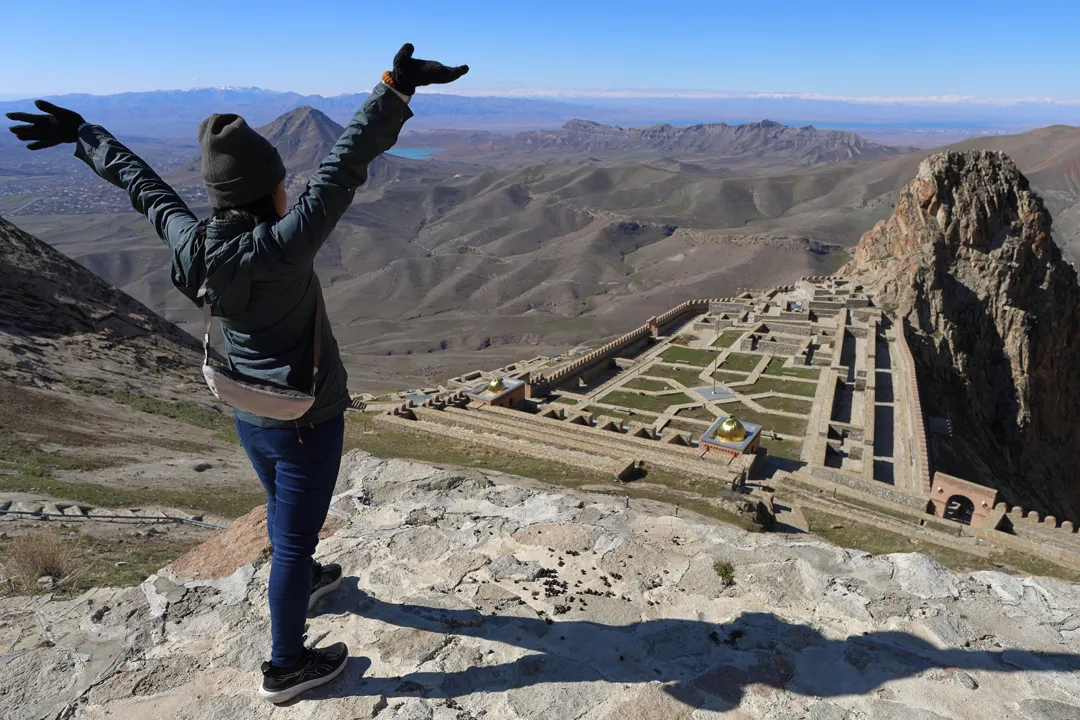- From Baku to Nakhchivan
- Nakhchivan Castle and Mausoleum of the Prophet Noah
- Alinja Castle, a fortress in the sky
- An afternoon in Ordubad
- Karabakhlar Mausoleum, Nakhchivan’s architectural masterpiece
- Momine Khatun Mausoleum and the Khan’s Palace
- Exploring Nakhchivan city
From Baku to Nakhchivan
The itineraries of most visitors to Azerbaijan are inevitably centered on the capital, Baku, since it is the political, economic, and cultural hub of the country, and has the only airport with regular international flights. While our plan was also to spend the first half of our trip there, I could never have been satisfied with only going to relatively accessible places, so I needed to find another destination for the second half — preferably somewhere remote and seldom visited.
As I examined a map of Azerbaijan, the solution to this problem became obvious: the Nakhchivan Autonomous Republic. It is the only autonomous region of Azerbaijan, has a population of approximately 471,000 or 4.6% of the national total, and is geographically unconnected to the rest of the country. Despite its small size and geographic isolation, Nakhchivan has been of significant importance in the history of modern Azerbaijan. In January 1990, it became the first part of the Soviet Union to declare independence, nearly two months before the better-known Lithuania. It was also the birthplace of former president Heydar Aliyev, who was widely credited with developing the newly independent country’s economy.

A part of Armenia separates Nakhchivan from the main part of Azerbaijan, and because these two countries are hostile to each other, the border has been closed for more than 30 years, making flying the only viable way to reach Nakhchivan from Baku. The price of the tickets is fixed, presumably with the help of government subsidies, at 50 manat for Azerbaijani citizens or 70 manat for foreigners.
Contrary to some previous reports, we had no difficulty booking the flights online. However, the actual travel experience was very unusual. Before we even entered the domestic terminal in Baku, a guard insistently tried to point us to the international terminal until we explained that we were going to Nakhchivan. Then at check-in, the agent needed to manually take photos of our passports before he could issue our boarding passes. The domestic terminal itself was previously the old international terminal, and still has the disused immigration and customs facilities, in addition to anachronisms such as mechanical information boards and old 2000s advertisements.
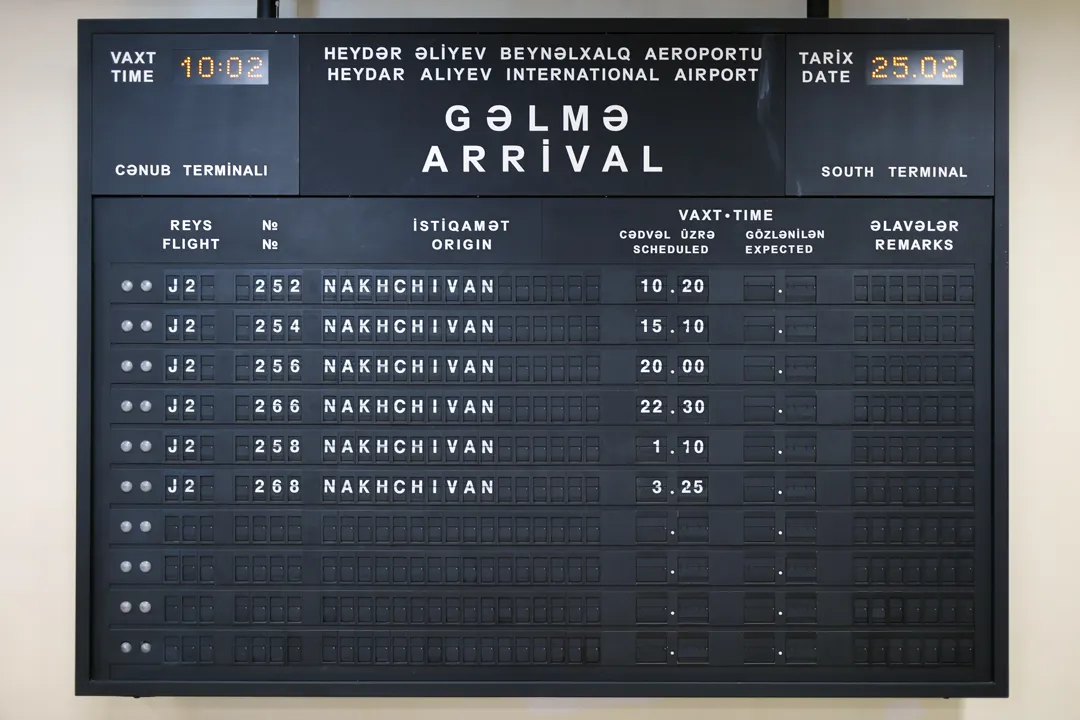
There are six daily round trips between Baku and Nakhchivan operated with 106-seat Embraer E190s. In other words, at most 636 people can travel from the main part of Azerbaijan to Nakhchivan per day. The terminal, having been designed to handle international flights, is far too large for such a small number of passengers, although it is very clean and well-maintained.

No advance seat selection is available for flights to Nakhchivan, so all seats are assigned at the time of check-in. We were given exit row seats, although it was unclear whether that was random or because we had paid more than everyone else.
Food is also provided despite the short flight time of less than one hour. On our outbound flight, it was only a piece of bread and carton of juice, but that is still better than the typical cookie or chips found on domestic flights in the US.
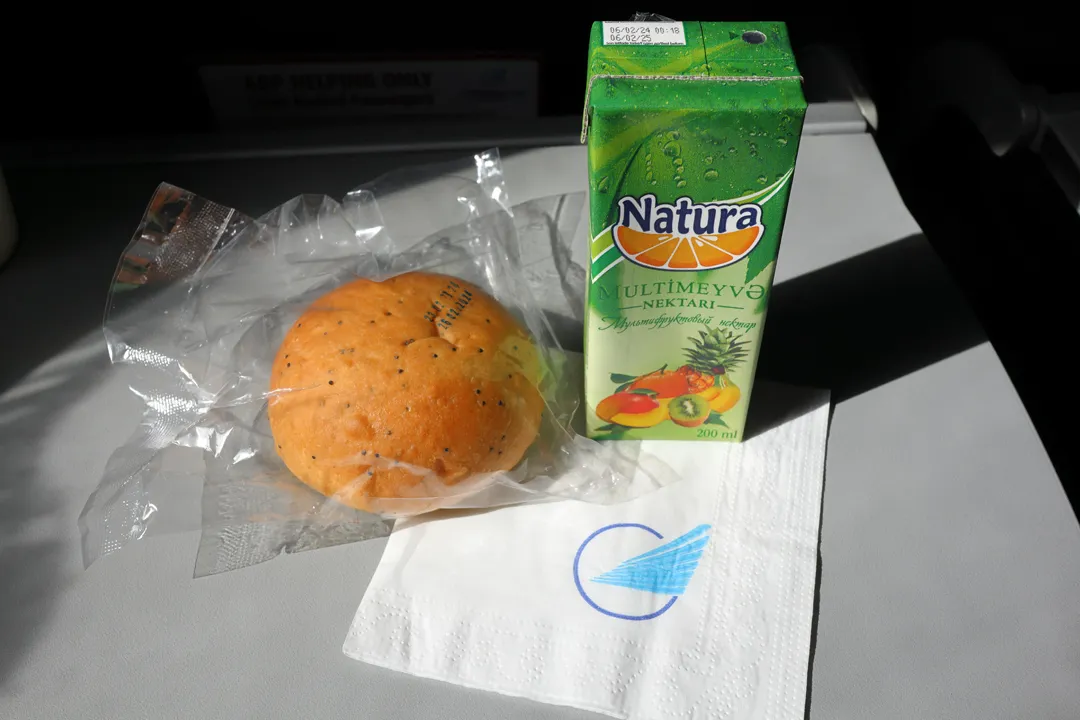
The flight crossed Armenian airspace and approached Nakchivan Airport from the north; there was not a lot of cloud cover, which allowed us to have a clear view of the snow-capped mountain range on the Azerbaijan-Armenia border.
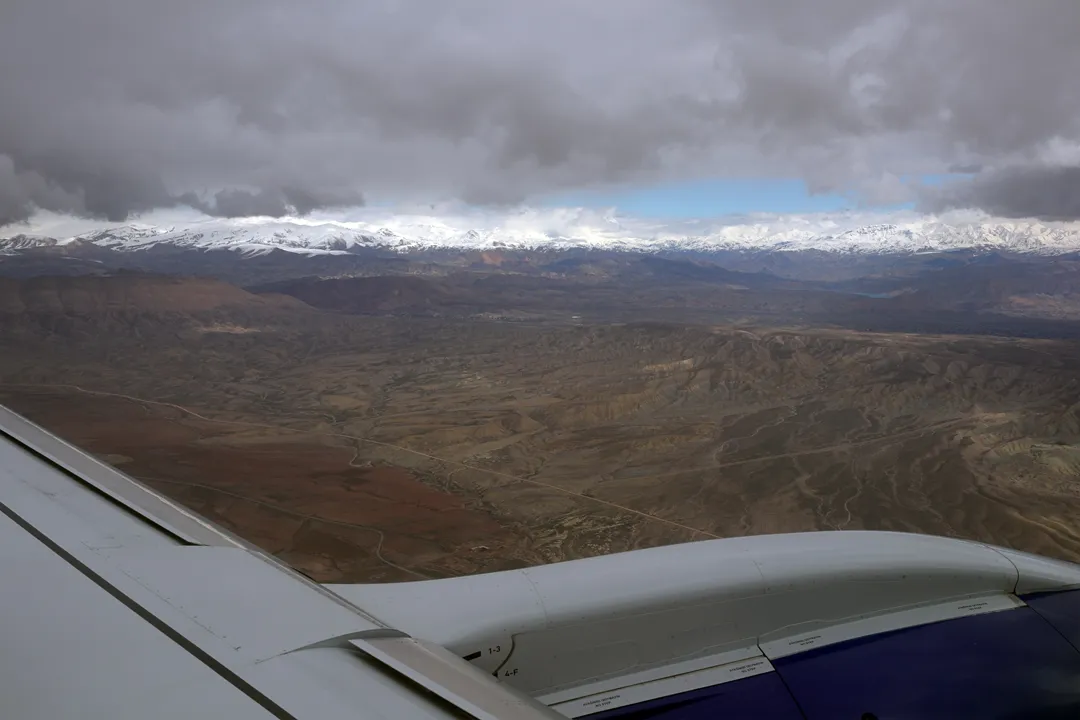
Azerbaijan is known for having the world’s lowest capital city — Baku’s elevation is -22 m — but the country’s geography is highly diverse, and the landscape of the Nakhchivan Autonomous Republic is vastly different from that of the Baku region. Nakhchivan city itself sits 873 m above sea level; the terrain of the surrounding area is arid and mountainous but also incredibly beautiful.
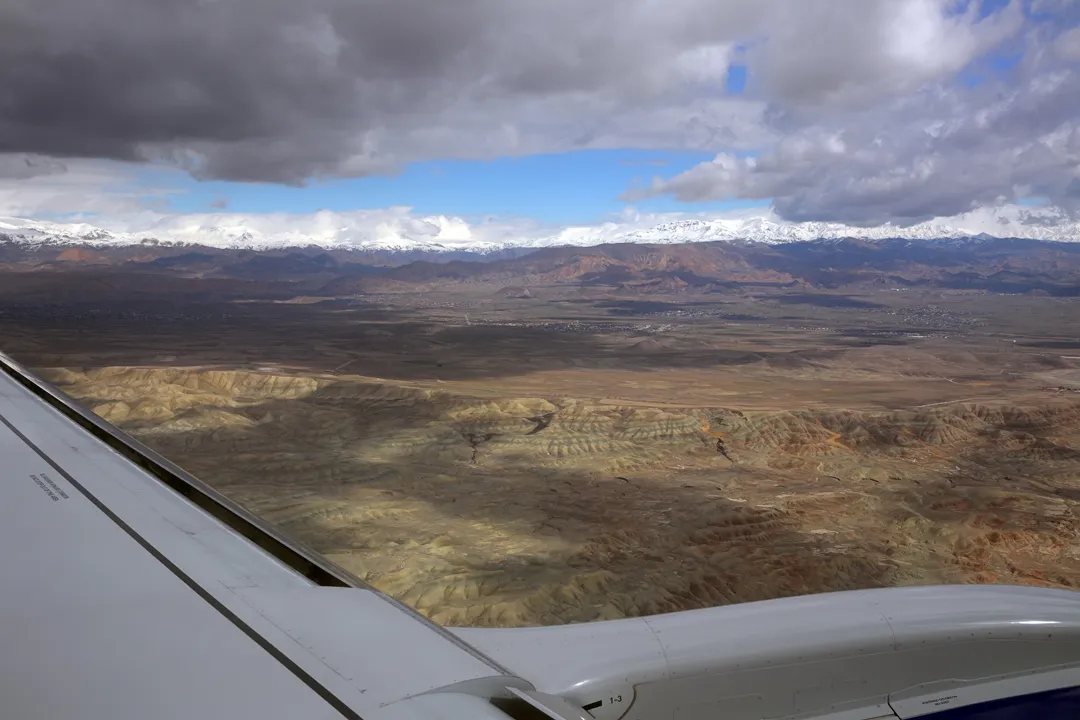
The airport is small and modern, and the ground transportation from there convenient enough. We easily found a taxi for the short ride to our hotel, the Saat Meydani Nakhchivan. Booking a hotel in Nakhchivan was in fact quite difficult, since there are not many to begin with and they have sporadic availability on major websites. Contacting hotels directly is also not very feasible because of the language barrier. No other hotels were available in the time frame of our trip, and we only found a small window to book online slightly less than two months out.
We ran into another problem at check-in when my credit card could not be used (it never worked anywhere in Azerbaijan except for the e-visa kiosk in the Baku airport). Fortunately, the hotel has an ATM, although it has a lower withdrawal limit than those in Baku: 200 manat instead of 400. Thus, I needed to make three transactions just to cover the cost of our stay.
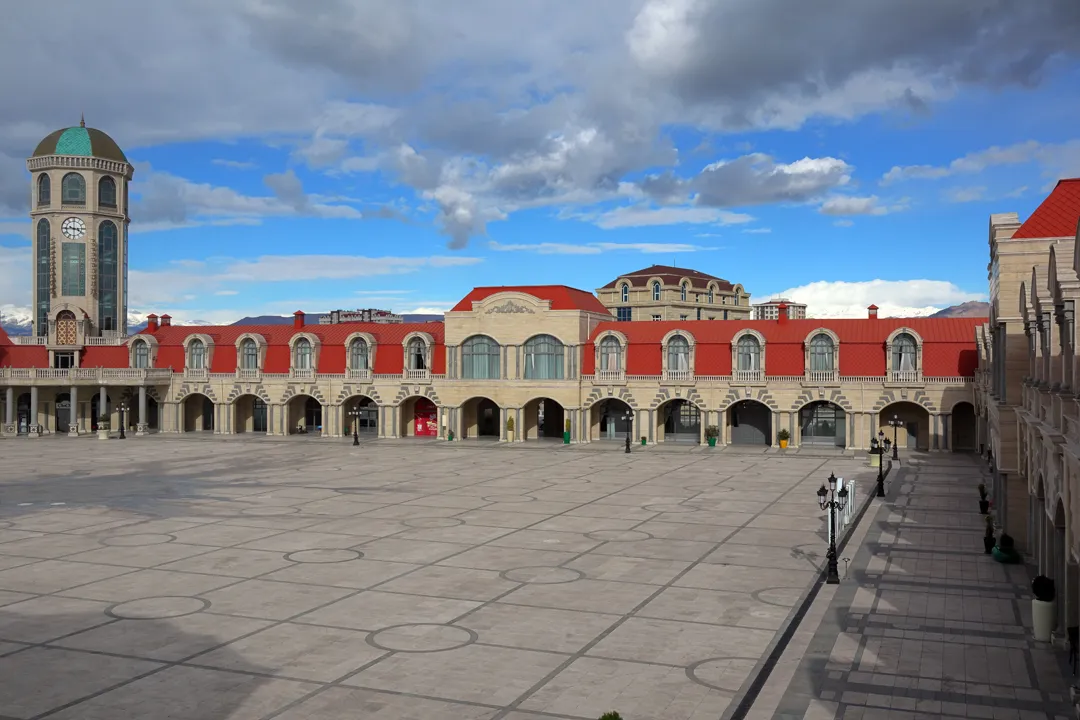
The Saat Meydani hotel is a two-level structure built around a central courtyard, with restaurants on the ground floor and the guest rooms upstairs. The rooms are clean and generously sized, but have a baffling lack of chairs. We even tried to ask the front desk for chairs but were told that there were none available.
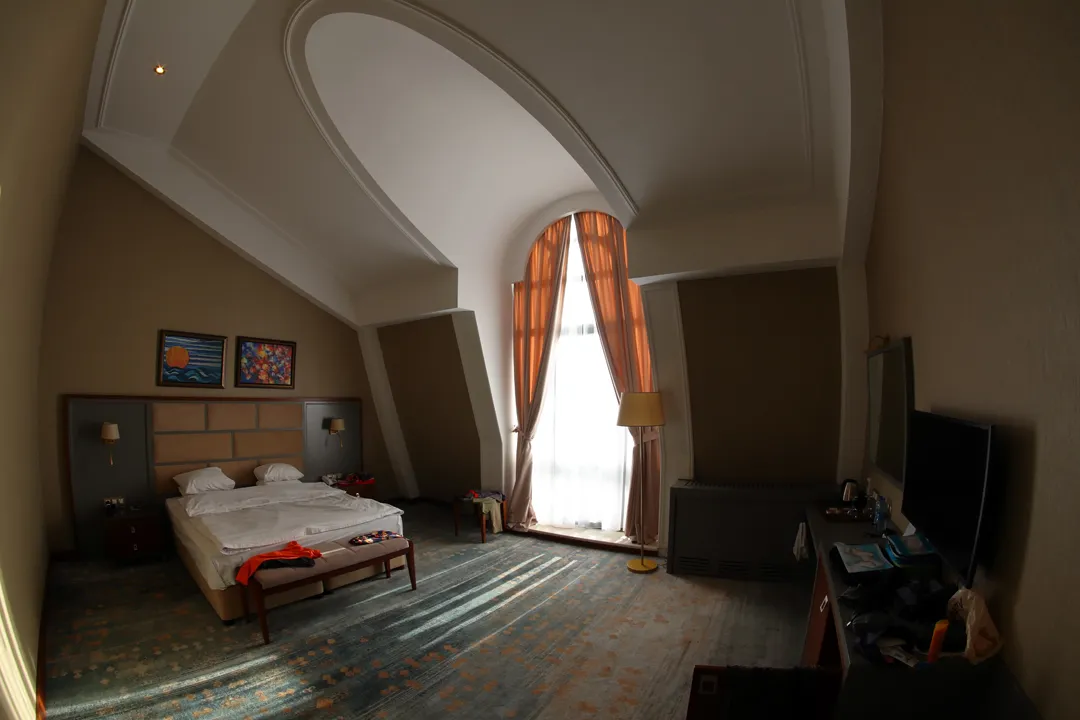
The most convenient feature for us unexpectedly turned out to be the restaurants, and we actually ended up eating dinner there on all three nights. All have English menus, and every dish that we tried was inexpensive but good.
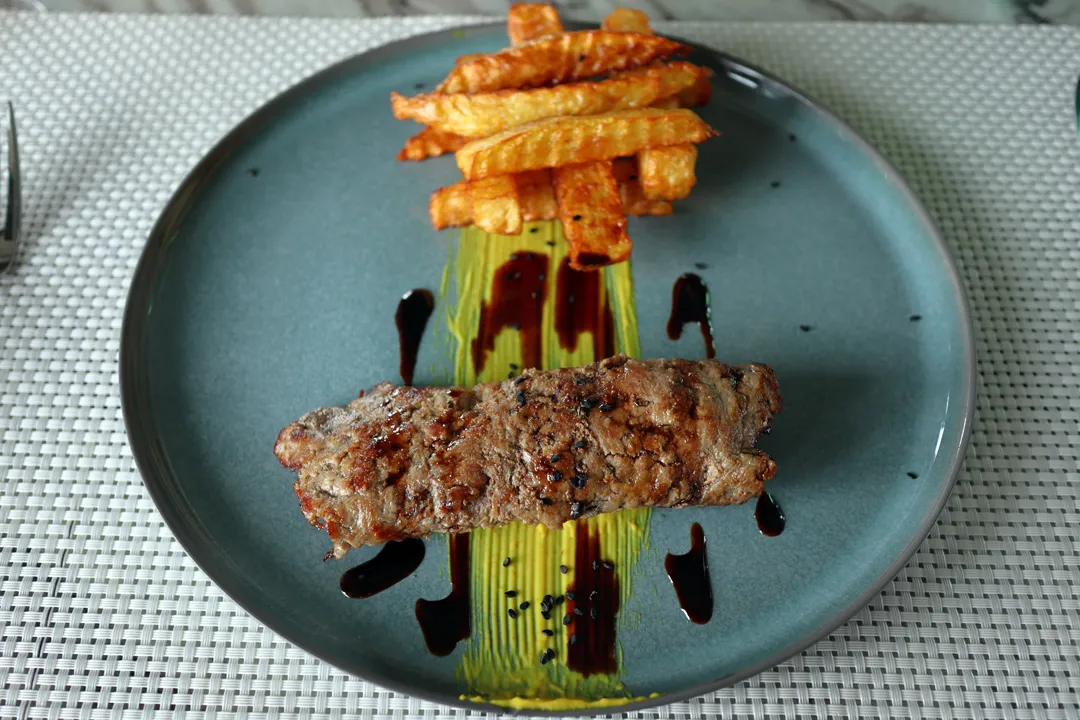
In addition to the Azerbaijani restaurant, we also ate at the Turkish and Georgian ones, but there is some overlap in the menus, so they all seemed fairly similar.
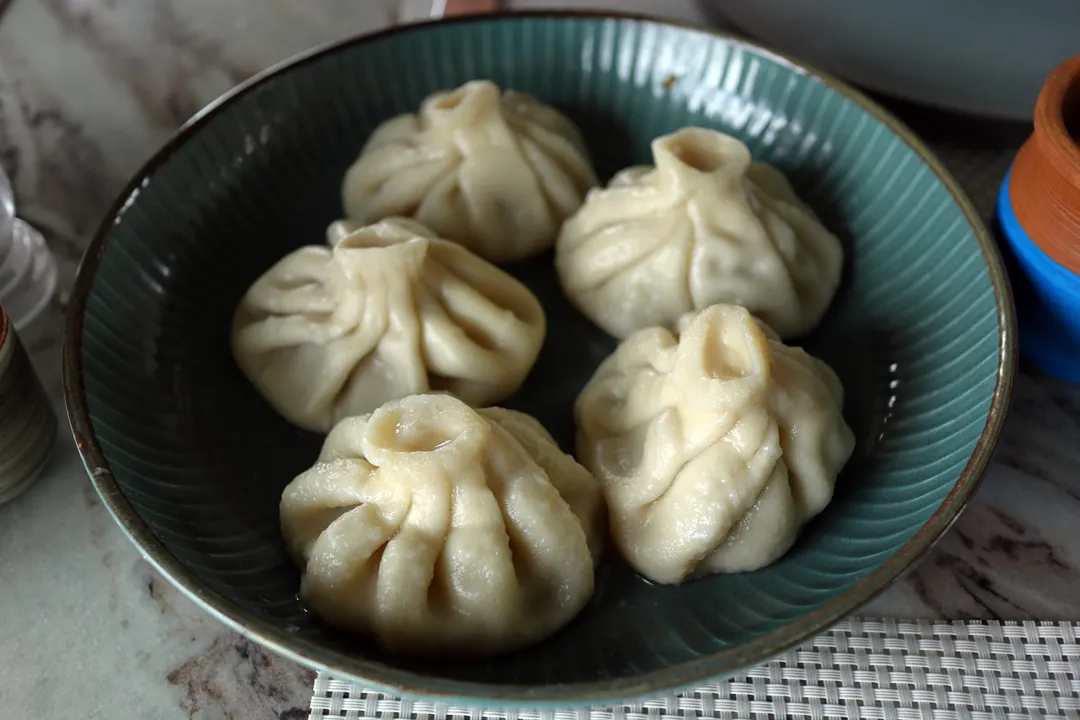
Nakhchivan Castle and Mausoleum of the Prophet Noah
After unpacking and eating, it was already mid-afternoon, and only around three hours of daylight remained. We had no ambitious plans for the first day and only went to two places within 500 m of the hotel. The roads in Nakhchivan are wide with little traffic, so it was easy to walk within the city. Incidentally, fuel in Nakhchivan costs only 1 manat per liter for 92 octane, the same as in Baku, even though all oil production in Azerbaijan is done in the main part of the country.
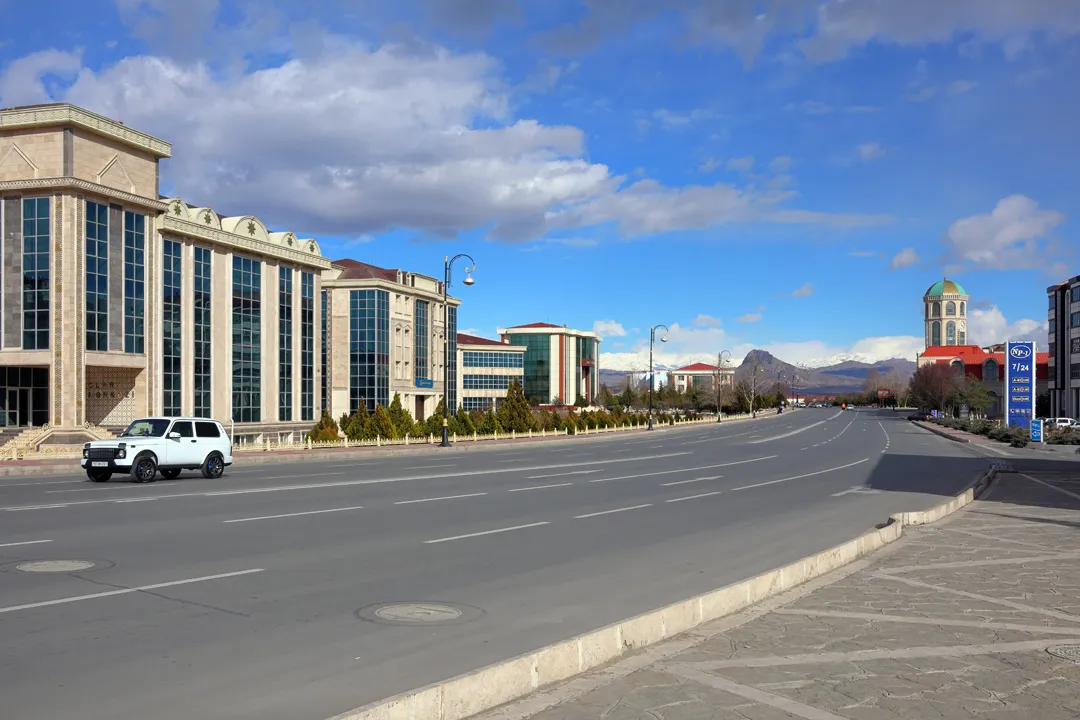
We only had to walk for a few minutes to reach the main gate of Nakhchivan Castle. The original fortification at this site was constructed in the 7th century but was eventually destroyed when the Mongol Empire invaded. In 2014, the current structure was built; it serves as a park and public event space rather than as an authentic replica.
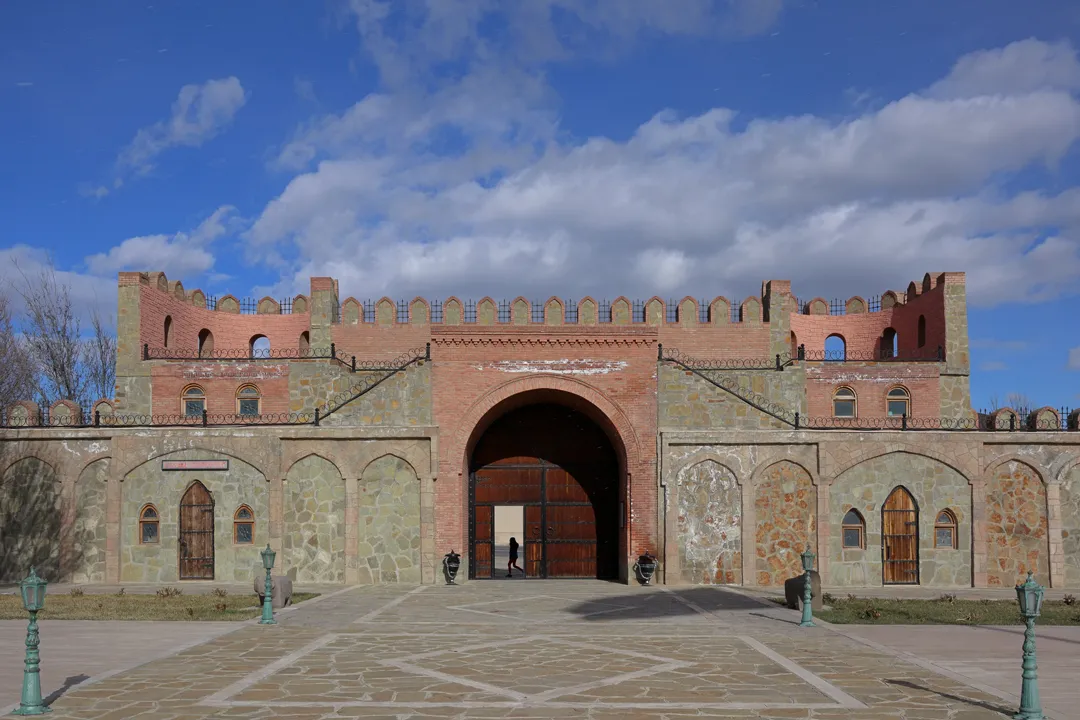
The building in the center is a museum housing various artifacts excavated from the ruins of the first castle. We briefly looked around inside and then went up onto the walls.

On the western side of the castle, there are good views of the lower part of the city. The weather was good enough that we could see very far into Iran; the border is only a few kilometers from this location.

We exited the castle from the turret at the southwestern corner.
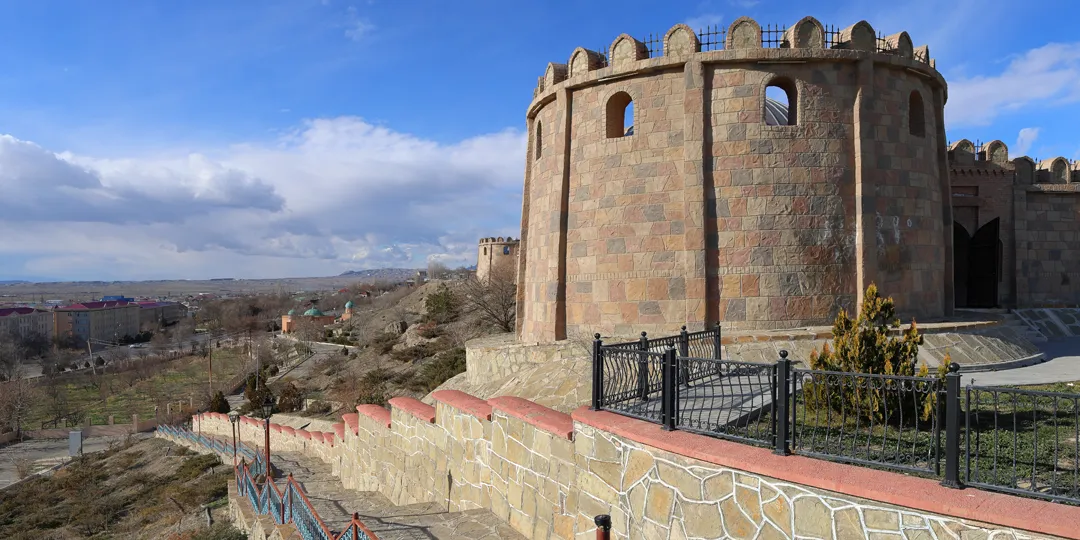
This exit leads to a curious octagonal structure — the Mausoleum of the Prophet Noah. While usually associated with Christianity, Noah is also an important figure in Islam, and local legends have long claimed that Nakhchivan is his final resting place.
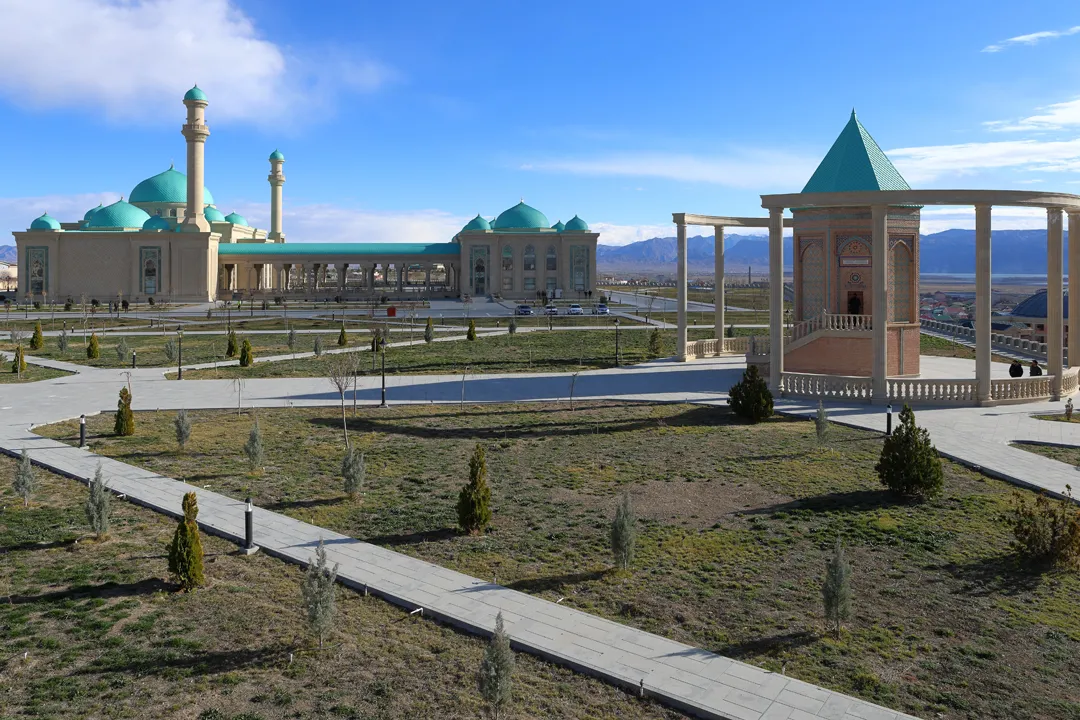
Like other Azerbaijani mausoleums, it is a hollow tower with a polygonal cross-section, decorated with geometric patterns and topped by a pointed roof. The upper part of the tower is a reconstruction but the base containing the tomb is supposedly real.
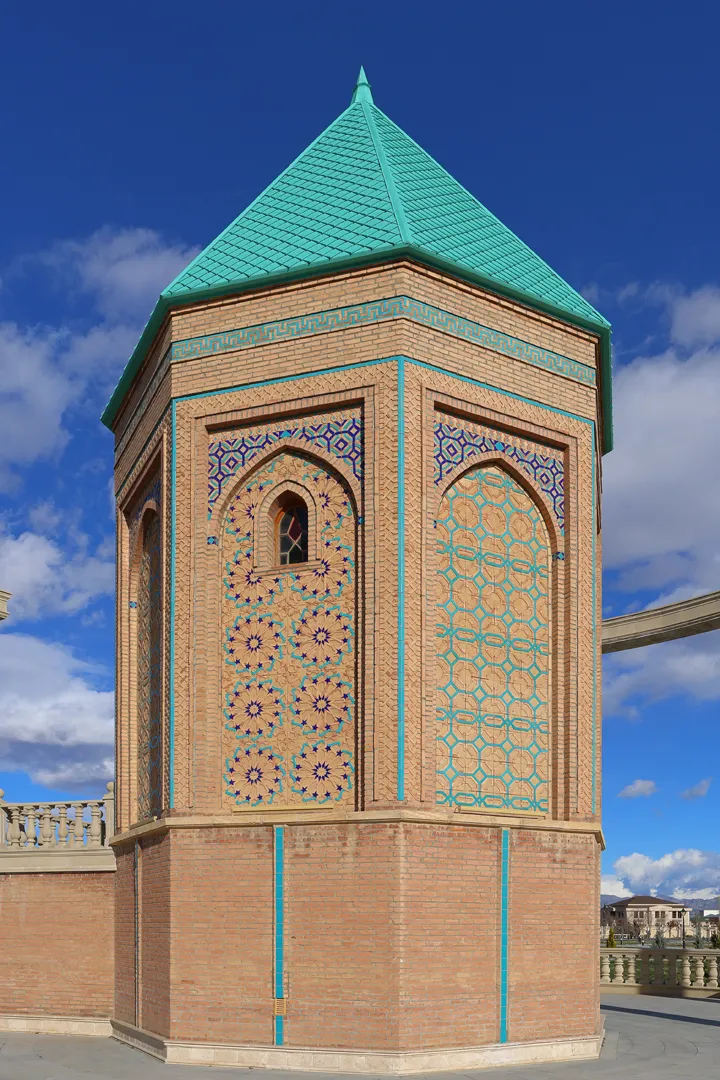
More careful examination shows how elaborate the decorative patterns are.
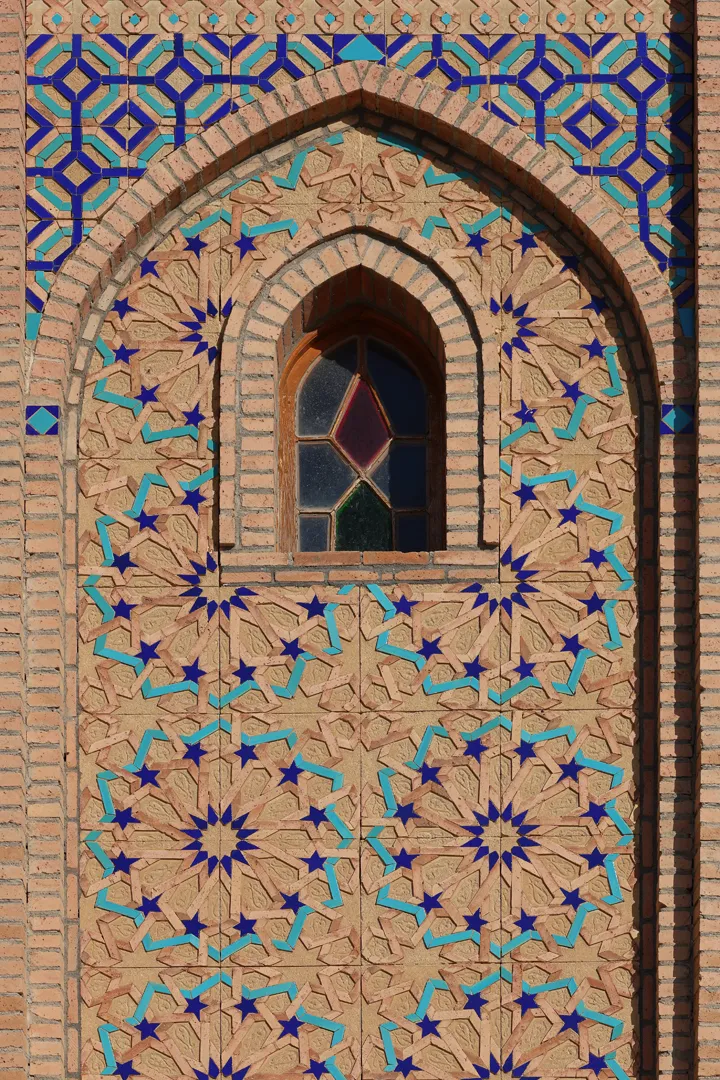
Another Nakhchivan legend involving Noah concerns the mountain Ilandagh, a distinctively shaped peak southeast of the city center which is considered one of the symbols of the region. Specifically, the notch at its top is said to have been the place where Noah’s Ark landed after the flood. Even if that is very far-fetched, at least it is a unique story that we would never have found out about without travelling here.
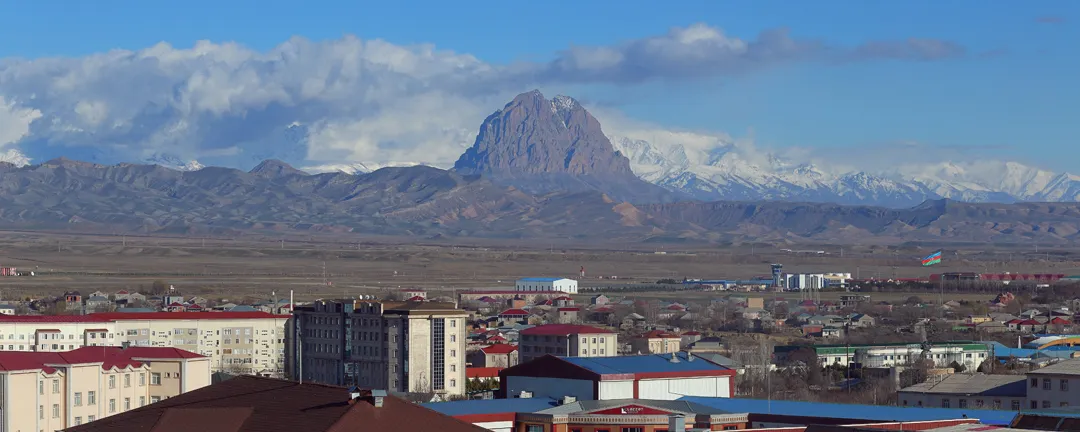
We did not spend too long looking around the vicinity of the mausoleum, and instead went back to the hotel to rest and prepare for the next day. Having found a café in the hotel’s tower, we decided to have a break there. The main part of the café is on the second floor, but all upper floors of the tower are used as additional seating areas.
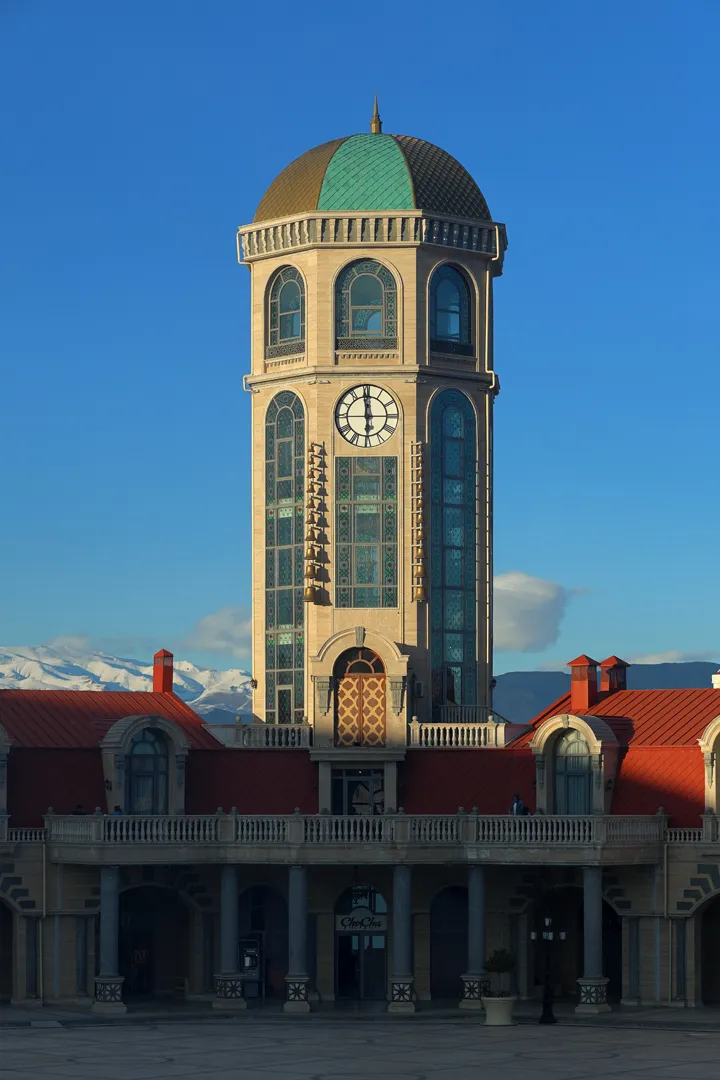
The top floor is not that high in absolute terms, but it is taller than all nearby buildings and provides unobstructed views in every direction. However, it is not obvious from outside that the tower is accessible from the café, so even most people staying in the hotel may not realize it.
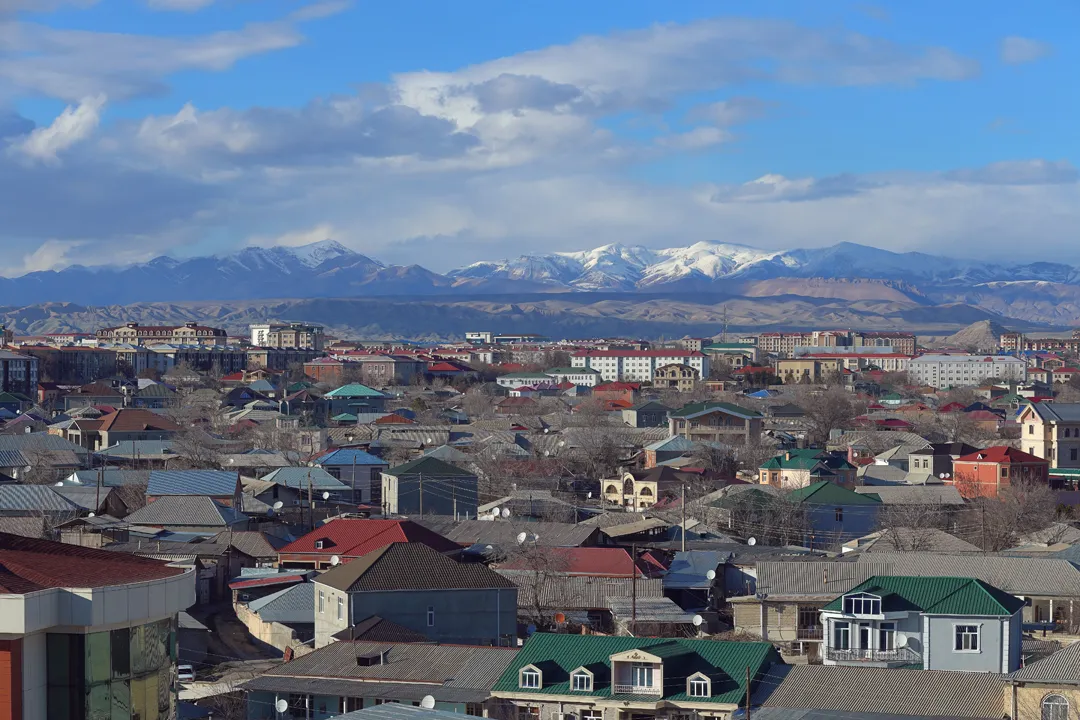
We ate cheesecake, which was also surprisingly delicious.

Later, we had to make transportation arrangements for the next day. We asked the front desk if they could help us find a driver, and provided our itinerary. The hotel apparently has a dedicated driver for tourists, and he wanted 140 manat for the entire day. We found this price to be reasonable and the entire process unexpectedly fast and easy, which was fortunate because few transportation options exist in Nakhchivan.
Alinja Castle, a fortress in the sky
The following morning, our driver met us on time in the hotel lobby, and we set off in his black 1990s Mercedes-Benz for the first and nearest destination, Alinja Castle. While only half an hour by road from the city center on paper, the castle is positioned atop a mountain and cars can only go as far as the parking area of the museum at the bottom. We started climbing, grateful for the fully paved steps on the path.
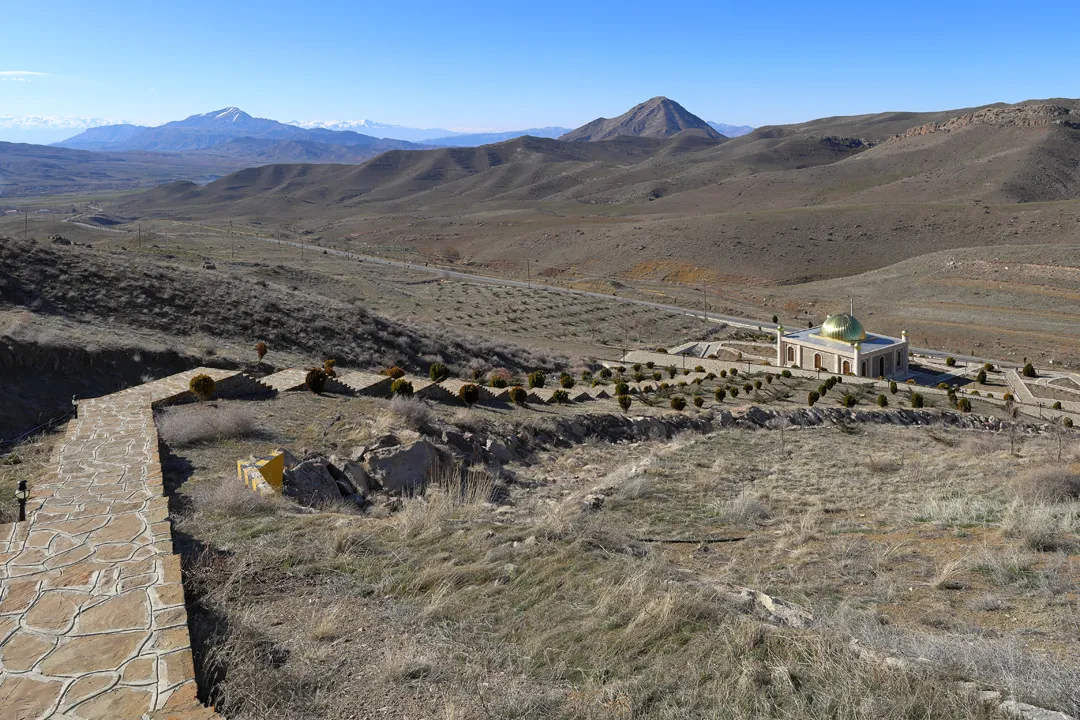
No other people had arrived before us. It took 45 minutes for us to reach the main part of the castle, but the cold February temperatures made the climb much more comfortable than if it had been spring or summer.
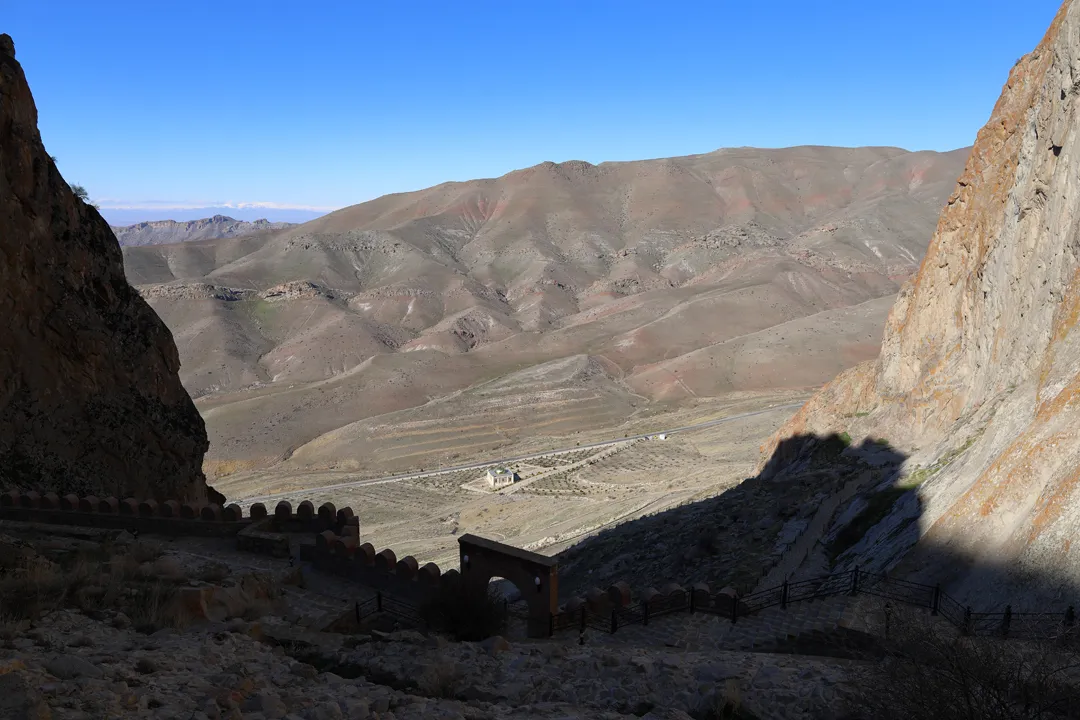
However, there is another, higher, part of the castle requiring an even steeper climb, so we had to continue.
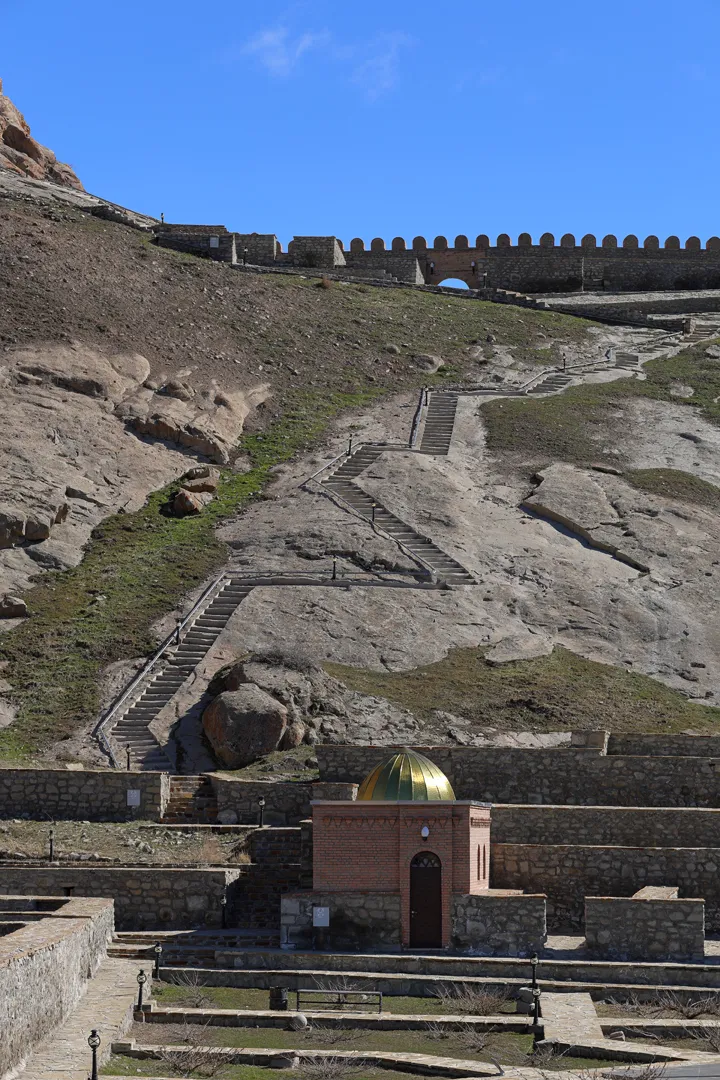
The path first leads to the upper wall, and then partway up the side of the highest peak of the mountain.

From this spot, we could see the entire castle and, because of the flawless weather, a vista of the landscape all the way to the distant mountains in Iran. This is a quintessential view of Nakhchivan and should not be missed. In all of our travels, we have never seen anything else comparable.

Also, this perspective clearly shows the strategic advantages of the location. In 1387, Alinja Castle was besieged by the forces of the legendary conqueror Timur, but the approximately 300 defenders managed to hold out for 14 years against an enemy with overwhelming numerical superiority, and the castle was not captured until 1401. Today, the whole place is empty and quiet, and it is difficult to imagine medieval battles here involving tens of thousands of people.
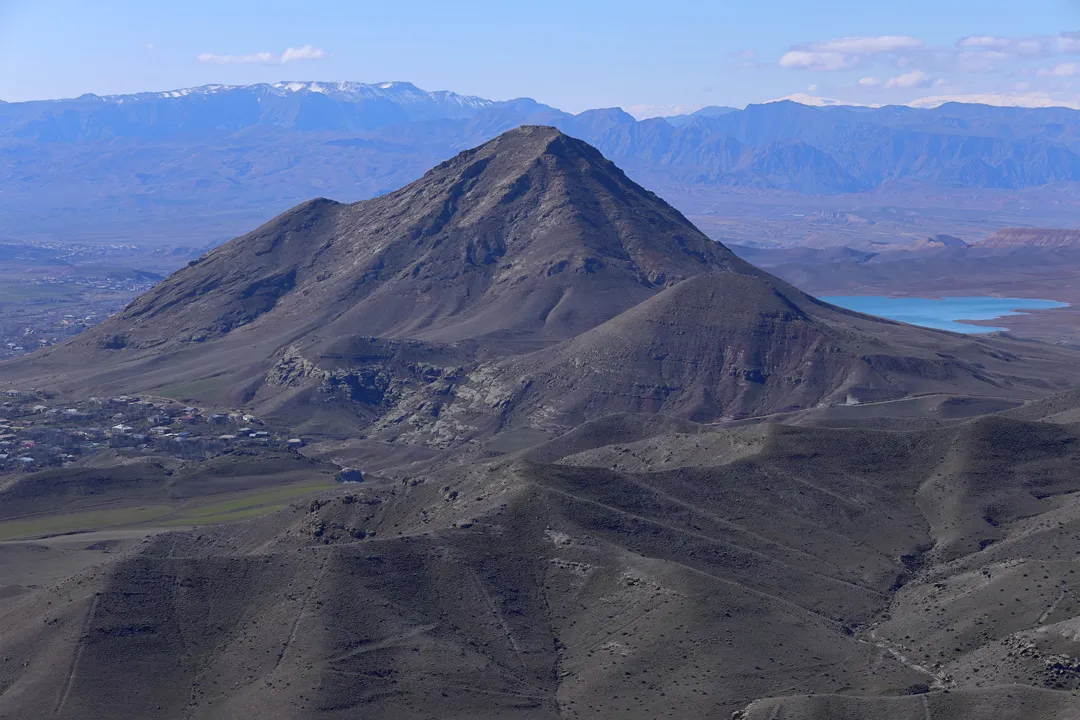
Although the most iconic view is to the west, the opposite or eastern side of the upper wall is also a good vantage point. It overlooks a farming village in the river valley below.
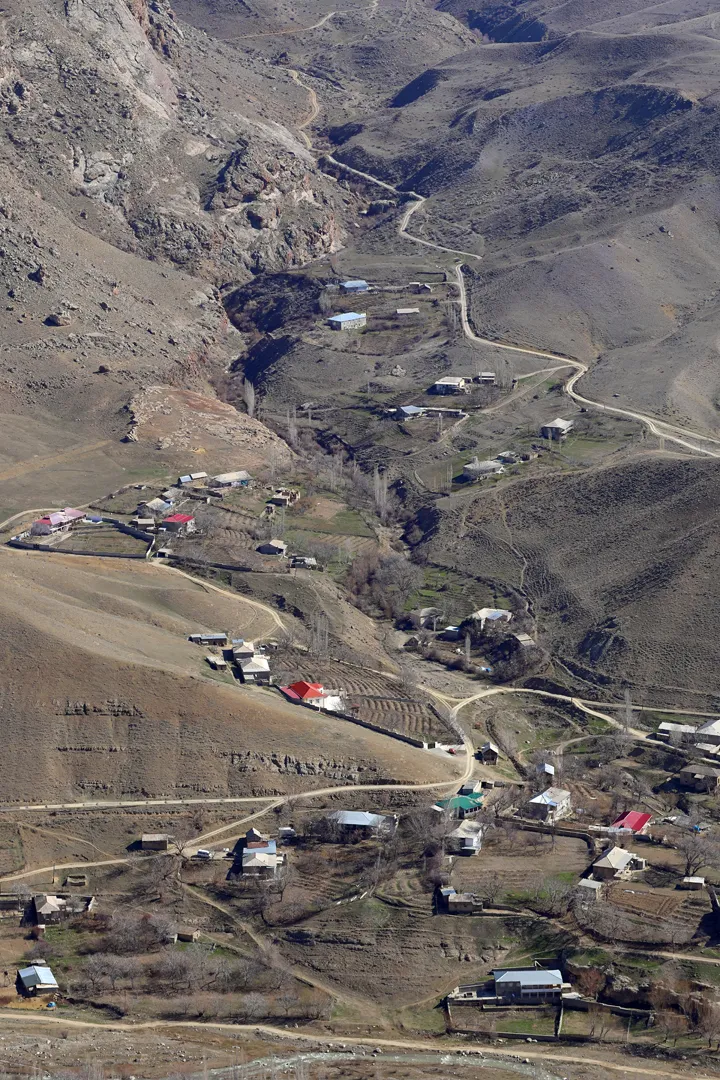
On our way down, we stopped by the museum briefly. It is small but new, and contains some relevant artworks.
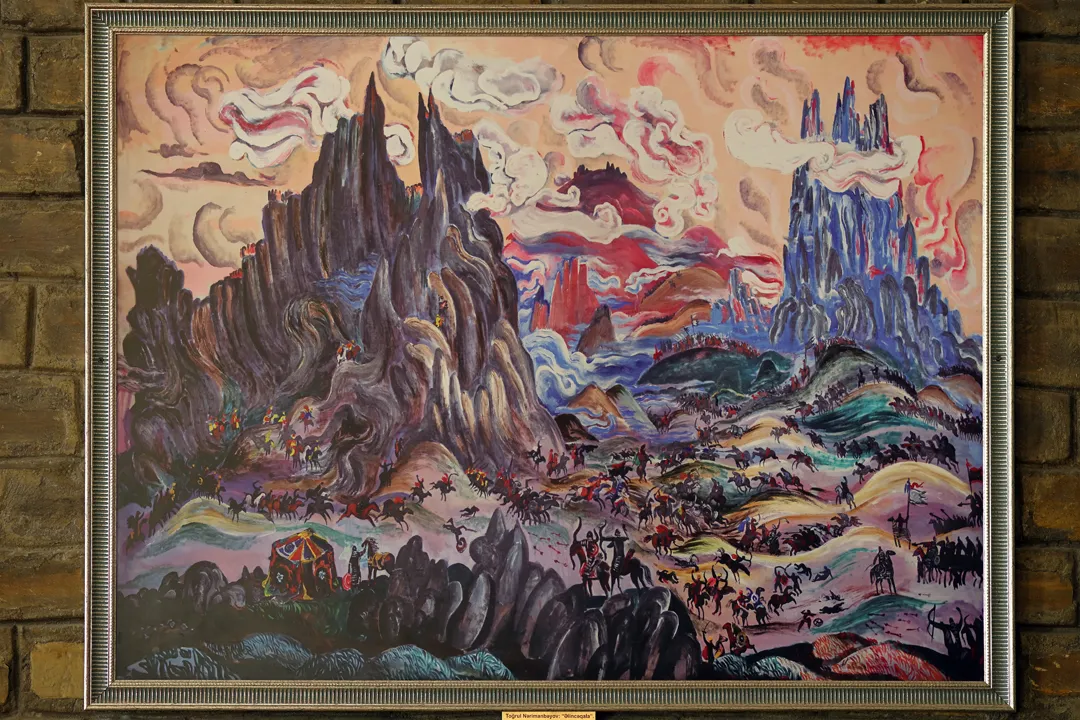
Due to the language barrier, there was a miscommunication about where we meant to go next, and we ended up at a stone bridge connected to a dirt road going nowhere. We walked for some time before realizing the mistake.
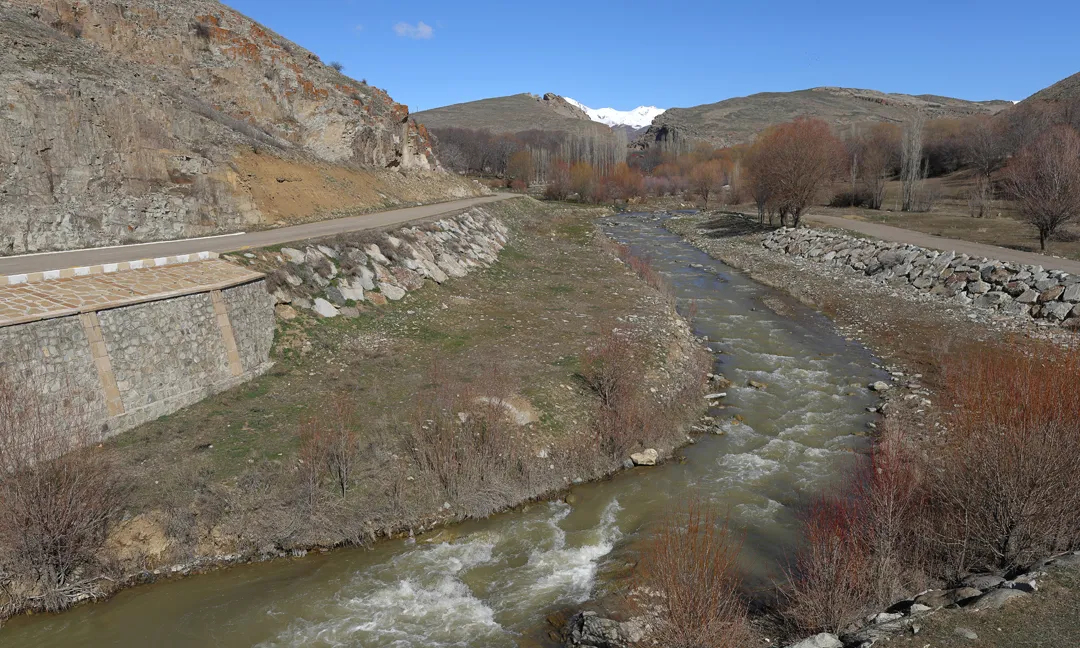
As it became clear that there was no end in sight, we turned back. At least we were able to see some of the landscape, so it was not a complete waste of time.
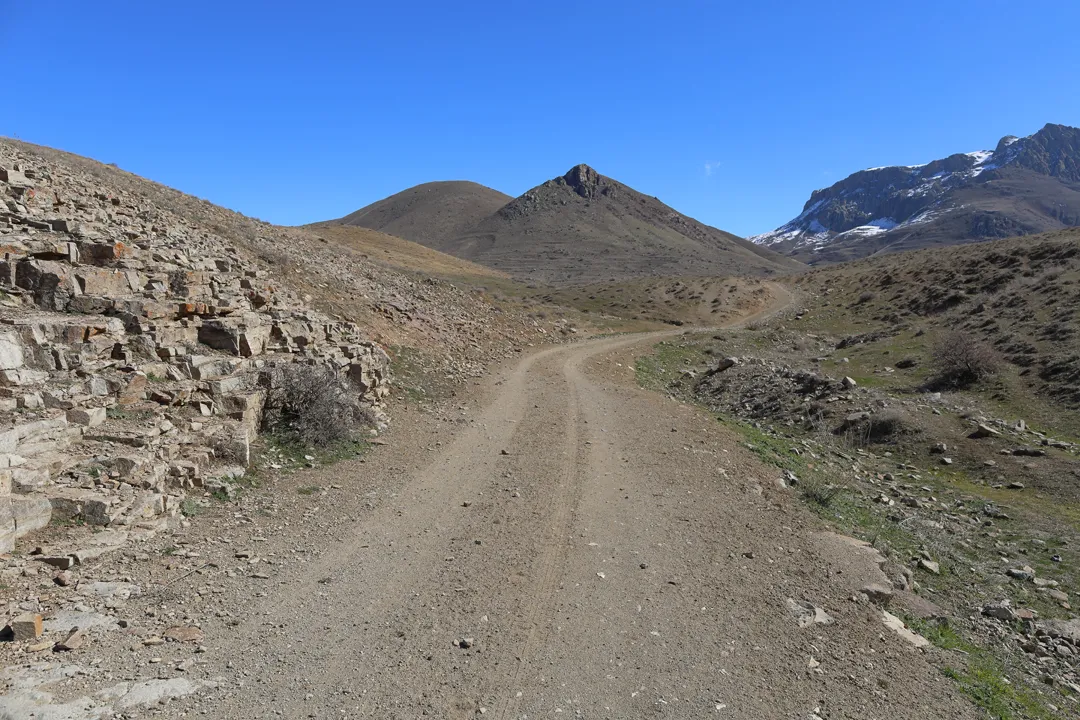
Our driver then suggested having lunch nearby, and we agreed. He brought us to a strange roadside restaurant where the signature dish was a kind of grilled trout. It was unfamiliar to us but was fresh and cooked perfectly.
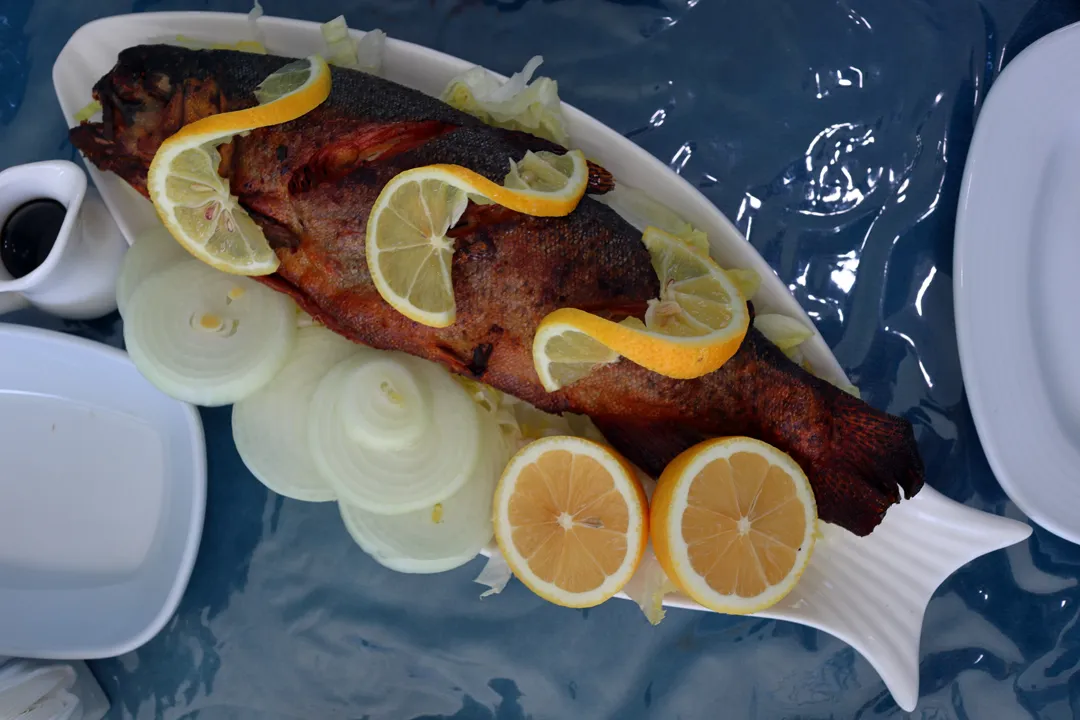
Presumably, it is extremely rare for the restaurant to have foreign customers, to the point that the owner wanted to take a photo of us at the table.
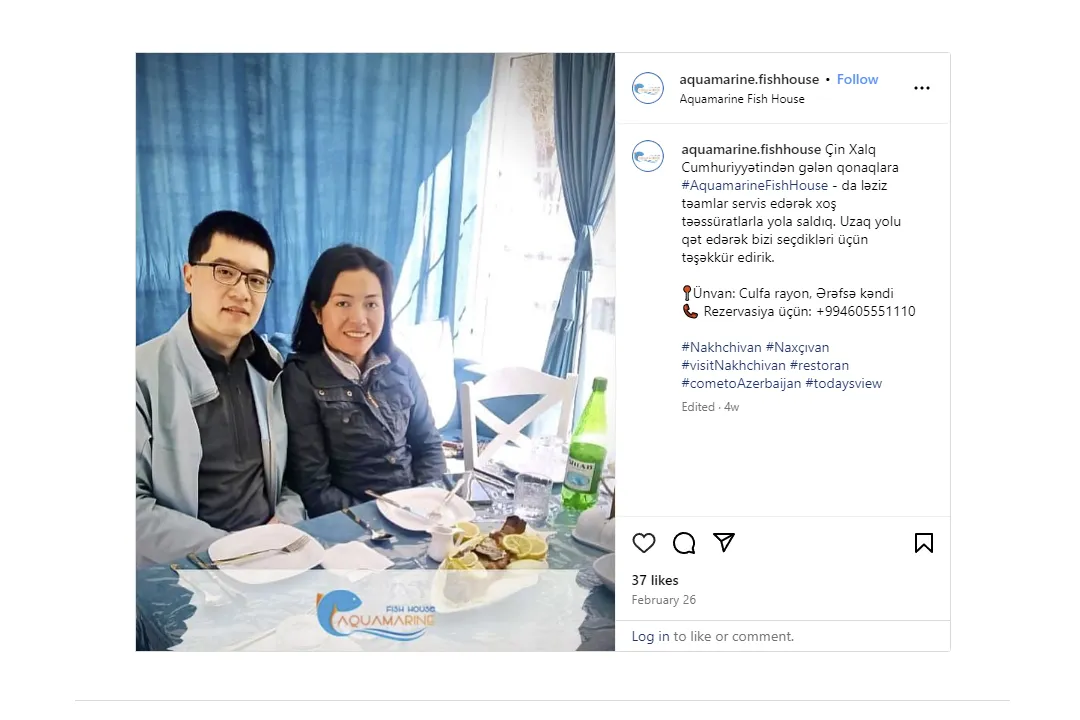
An afternoon in Ordubad
We finished eating lunch later than usual, but there were still several hours left before it would get dark. The drive to Ordubad, the second largest city in Nakchivan, would take at least one hour, so we wasted no time getting back on the road. However, before reaching the main highway, we noticed a spot with a closer view of Ilandagh, and we stopped momentarily for a photo.
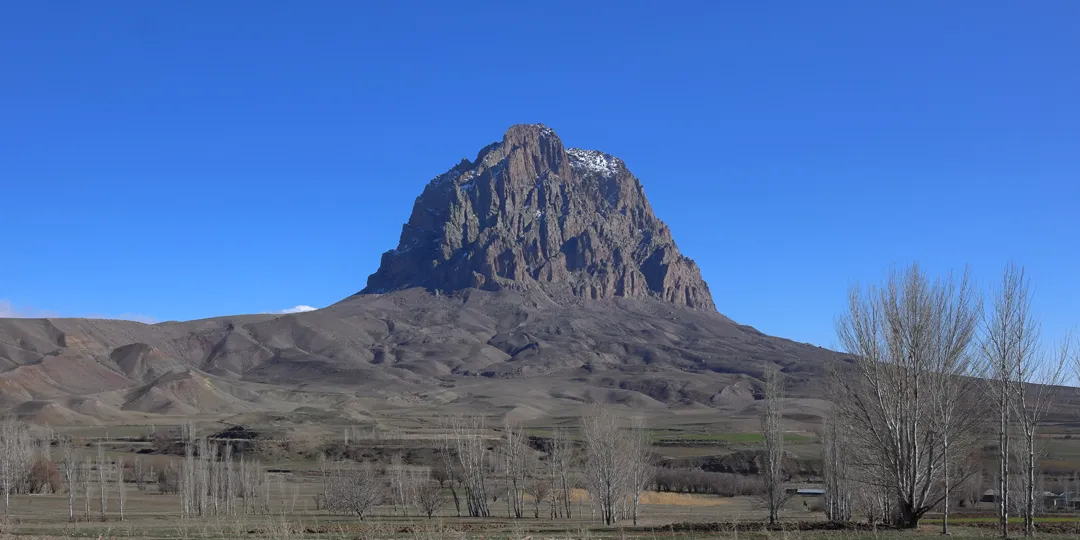
Slightly less than halfway from Nakhchivan city to Ordubad is Julfa, where the larger of two border crossings between Nakhchivan and Iran is located. There were so many trucks waiting to cross into Iran that the queue extended far out onto the main highway, even though the actual checkpoint is on a side road more than 2 km away. It was not clear whether this is an everyday occurrence or there happened to be some sort of incident that day.

Past Julfa, there is only local traffic, but this section of the highway, connecting Julfa with Ordubad, has the most varied and spectacular scenery; it runs alongside the Aras River, which forms a natural border between Azerbaijan and Iran.
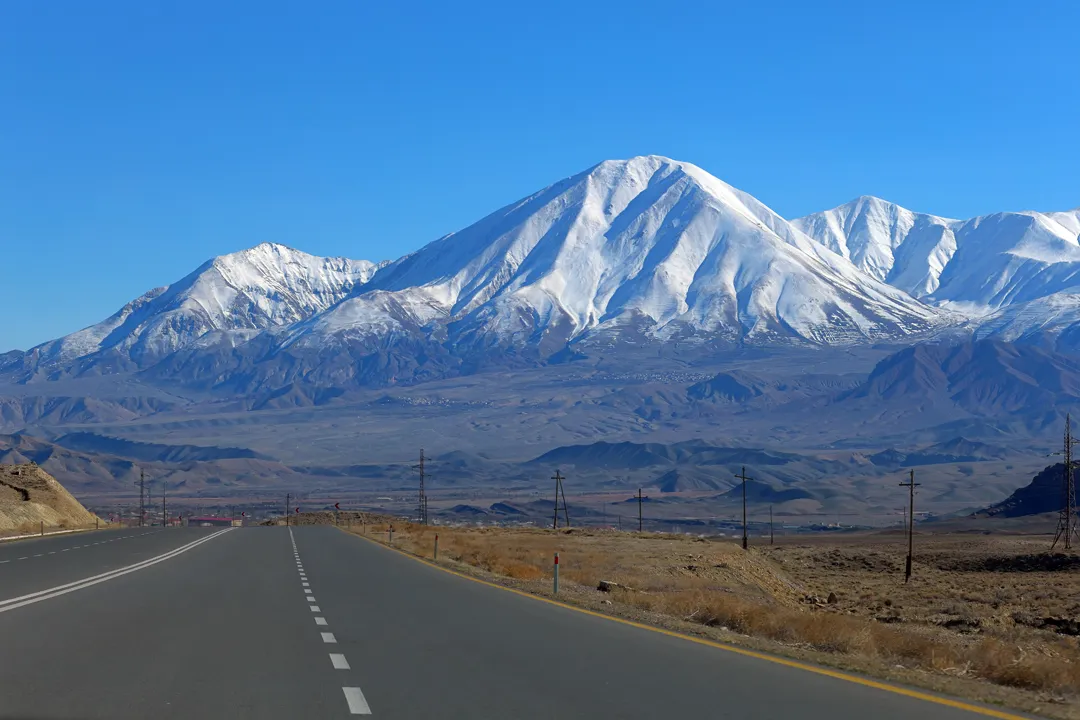
The parallel road on the Iranian side appears to be the shortest land route between Nakhchivan and the main part of Azerbaijan, but we did not see much traffic over there either, possibly because the trucks were blocked. Incidentally, satellite imagery shows that the Iranian road is narrower than the Azerbaijani one (two lanes instead of four) and significantly curvier, so it would be much less pleasant to drive.
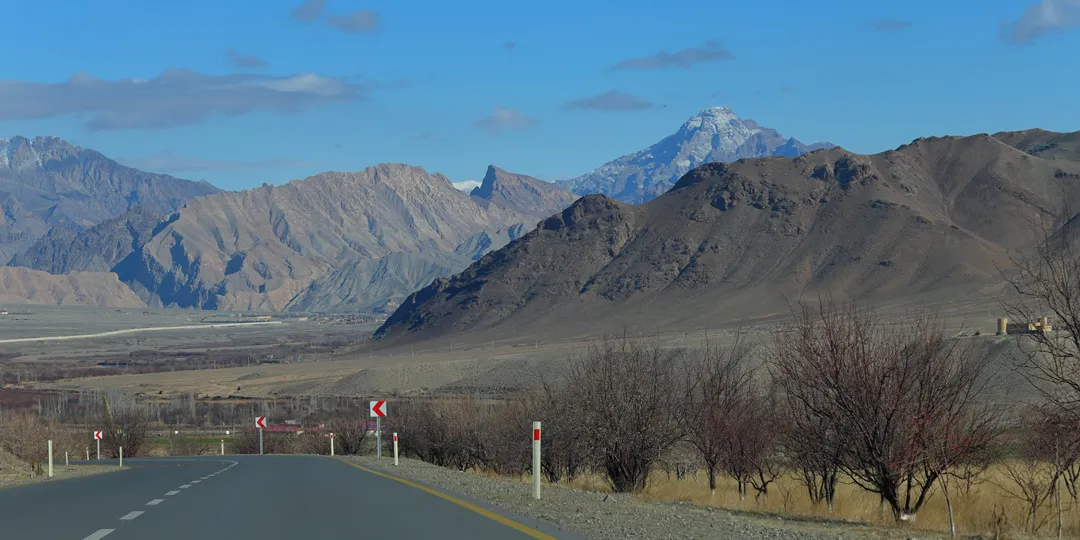
Entering Ordubad, the highway transitions into the city’s main street. Our driver parked across from the main government building, leaving us to explore on foot. Ordubad is rather small, with a population of only 11,000, and all of the places of interest can be found within a few blocks along the central throughfare.
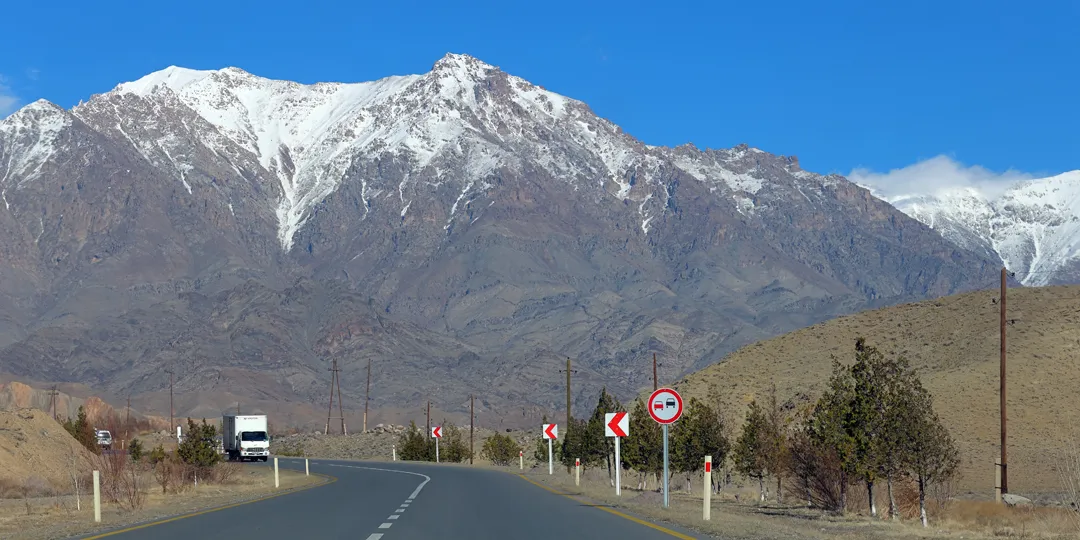
The most visible landmark in Ordubad is the Juma Mosque, built in 1604 by the order of Abbas the Great, ruler of the Iranian Safavid dynasty. It has survived to the present day, unlike its larger counterpart in Nakhchivan city, and its architectural style is unique to Nakhchivan.

On the other side of the street is the Geysariyye, another 17th century building which was originally a gold and jewelry market. It was used for various other purposes in later years, and was turned into a museum around the time of the collapse of the Soviet Union. Like every other museum in Nakhchivan, entrance is free.
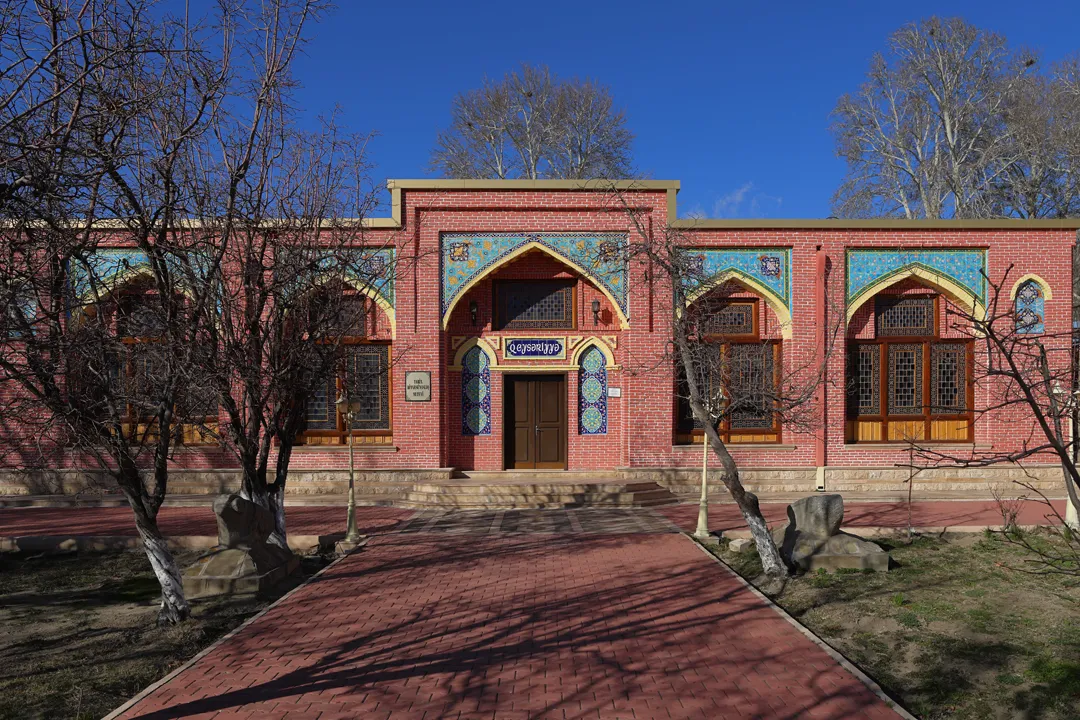
Inside, it has a symmetrical layout with one big dome in the center surrounded by sixteen smaller domes, each corresponding to a window or door arch and decorated with geometric patterns. The spaces under the domes are all interconnected and now used to display artworks and artifacts.
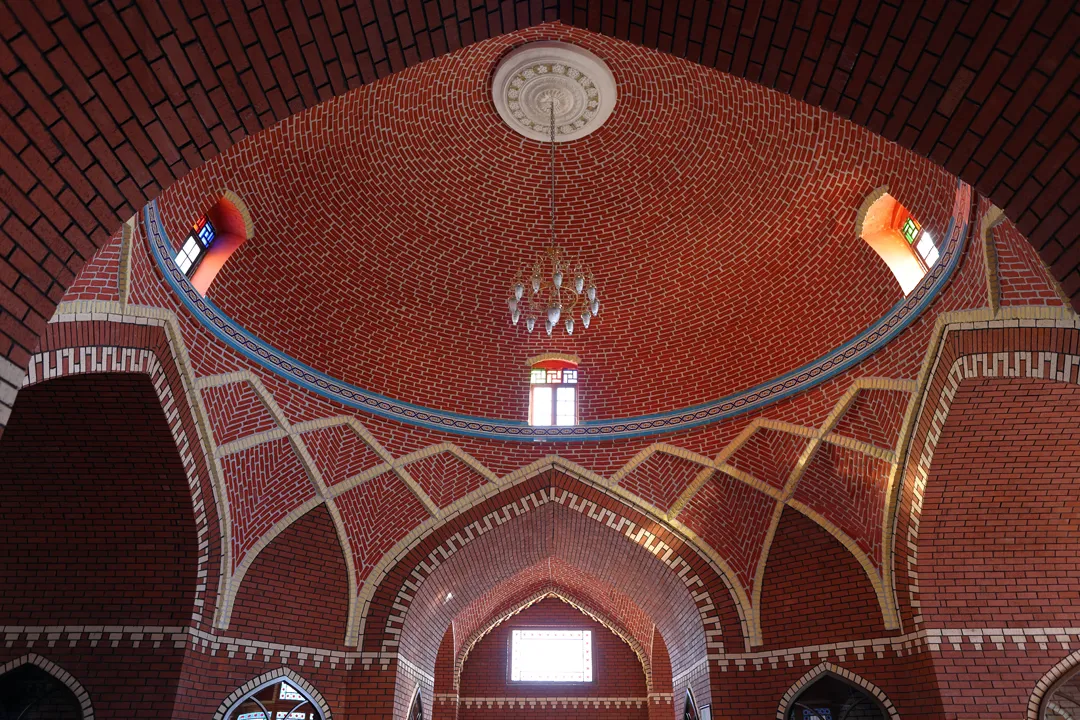
It is very remarkable that a place as small, remote, and obscure as Ordubad can maintain a nice museum in an actual historical building. Equally worth mentioning is that the employees were nice and welcoming to us. They even asked to take our photo, presumably because having foreign visitors is extremely rare.
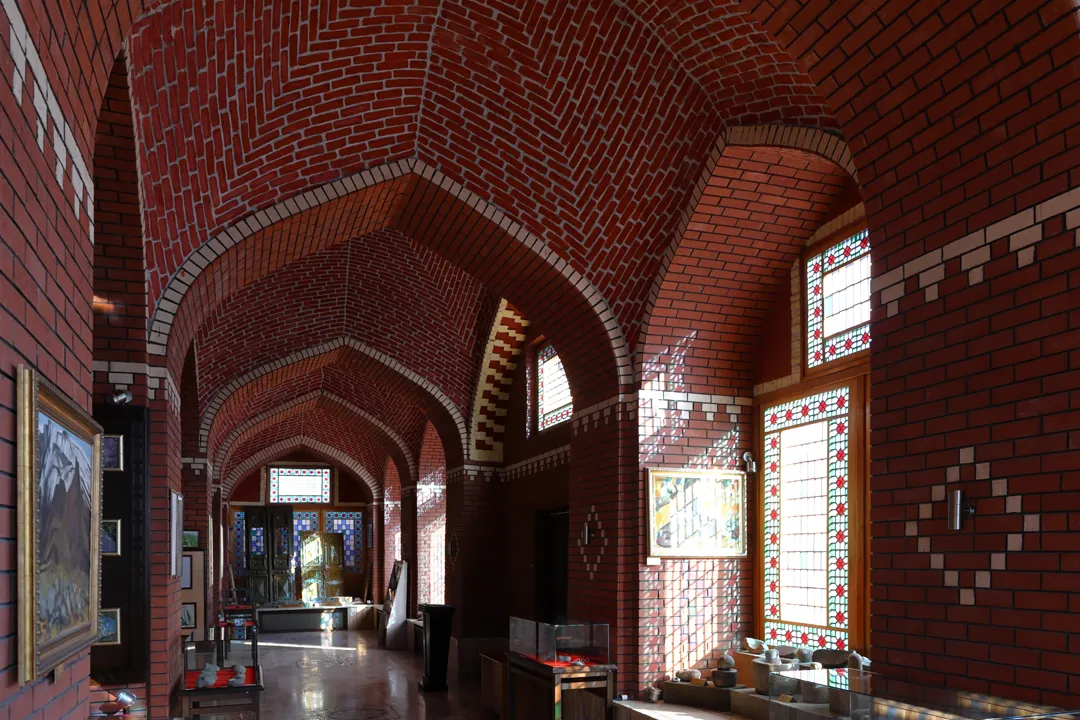
North of the museum, there is a park in the narrow space between the street and a small river. Before there were any roads, the settlement was likely centered on the river, and the modern layout continues to make use of the natural topography.
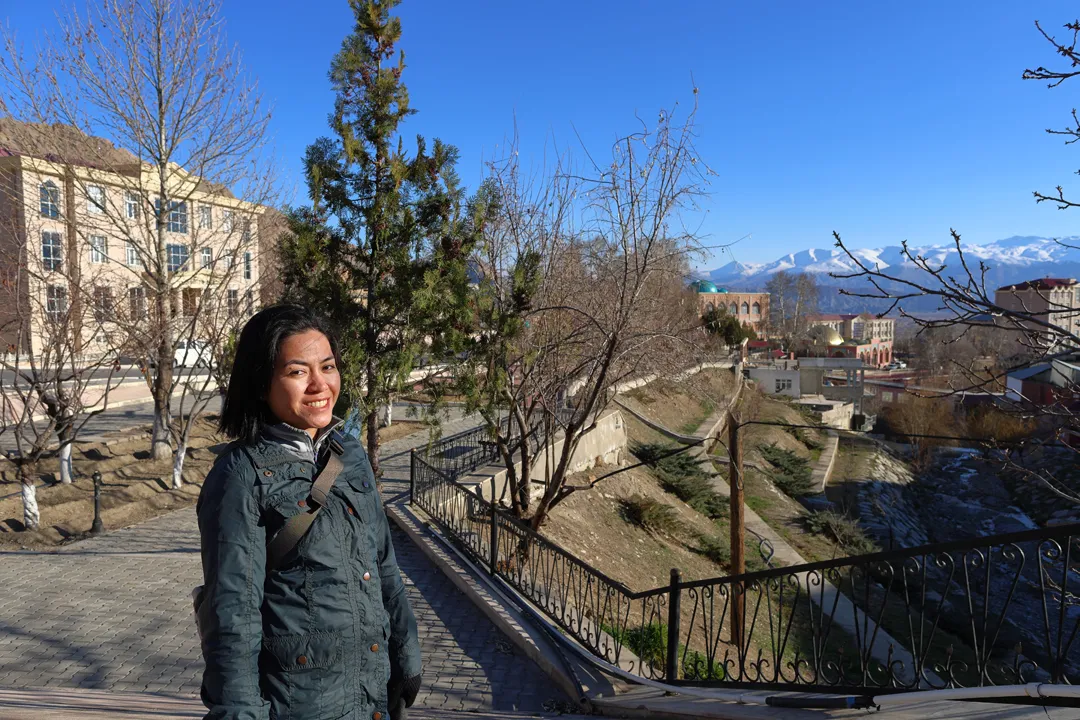
Notably, there is a building which spans the river, combining a pedestrian bridge on top and a restaurant below. From the street, it looks like a simple bridge with no special features, and the entrance to the restaurant is through a small archway leading to a flight of stairs.
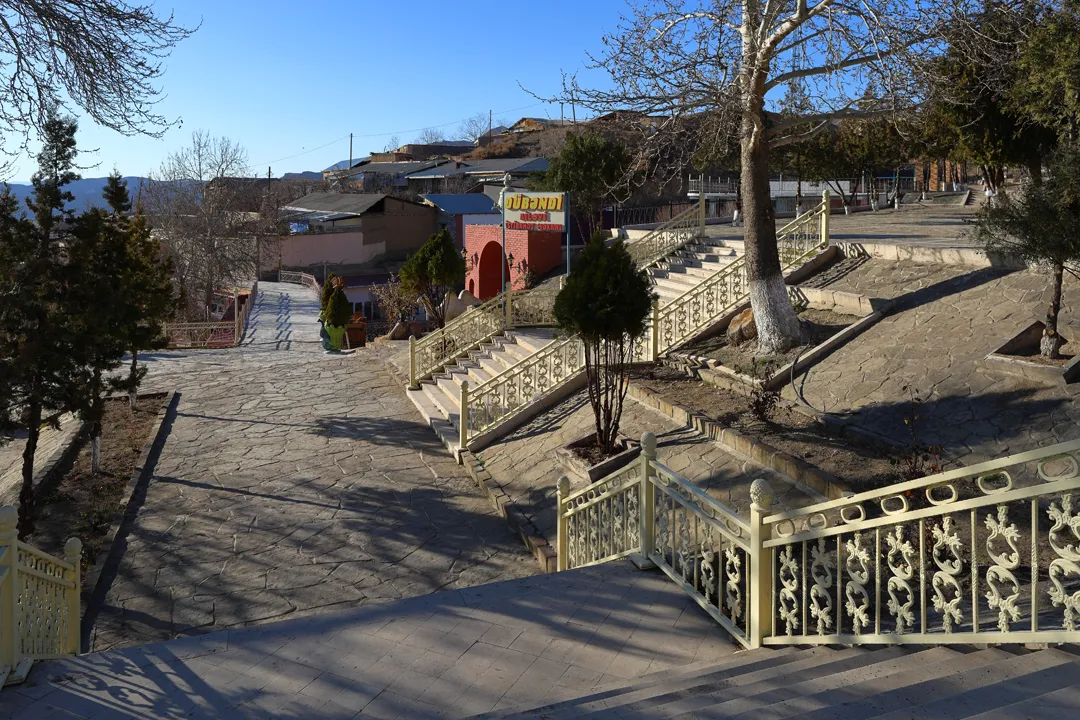
We only found it when we went to the edge to look around, and then we went down out of curiosity. In warmer weather, the outdoor seating area directly over the river would be nice, but not in February, so we proceeded inside. There were a few locals hanging out and socializing; they paid us no mind.
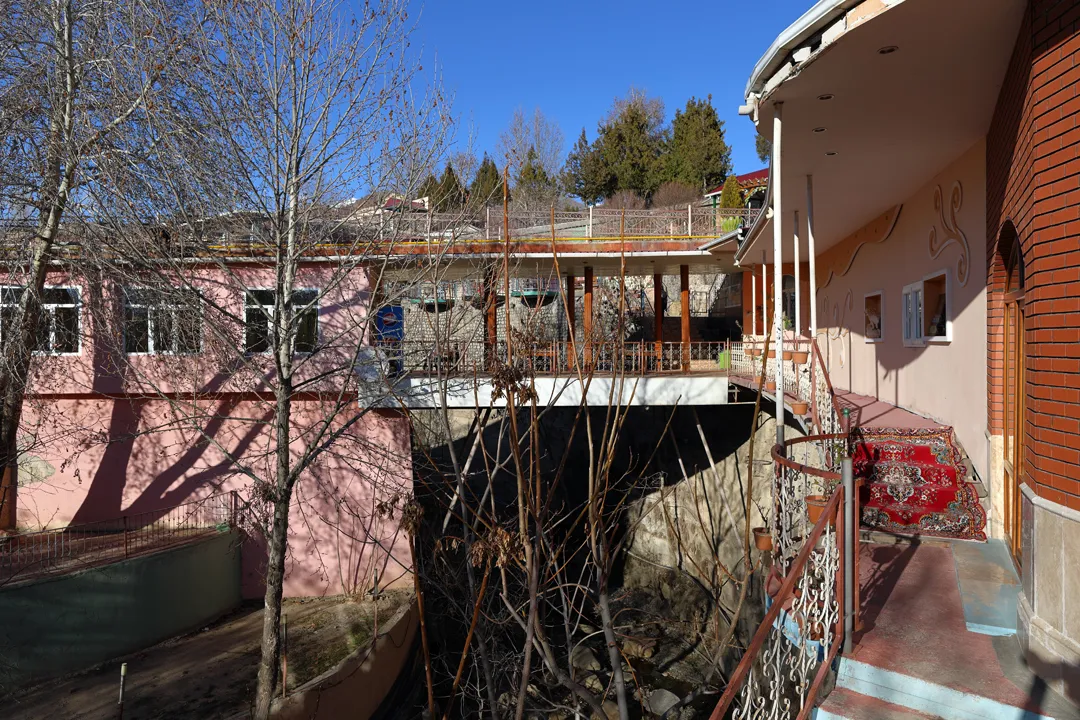
Had we not been too full from eating lunch late, we could have ordered dessert or more food, but instead we only got coffee for 1 manat. Curiously, it tasted better than we would have expected it to.
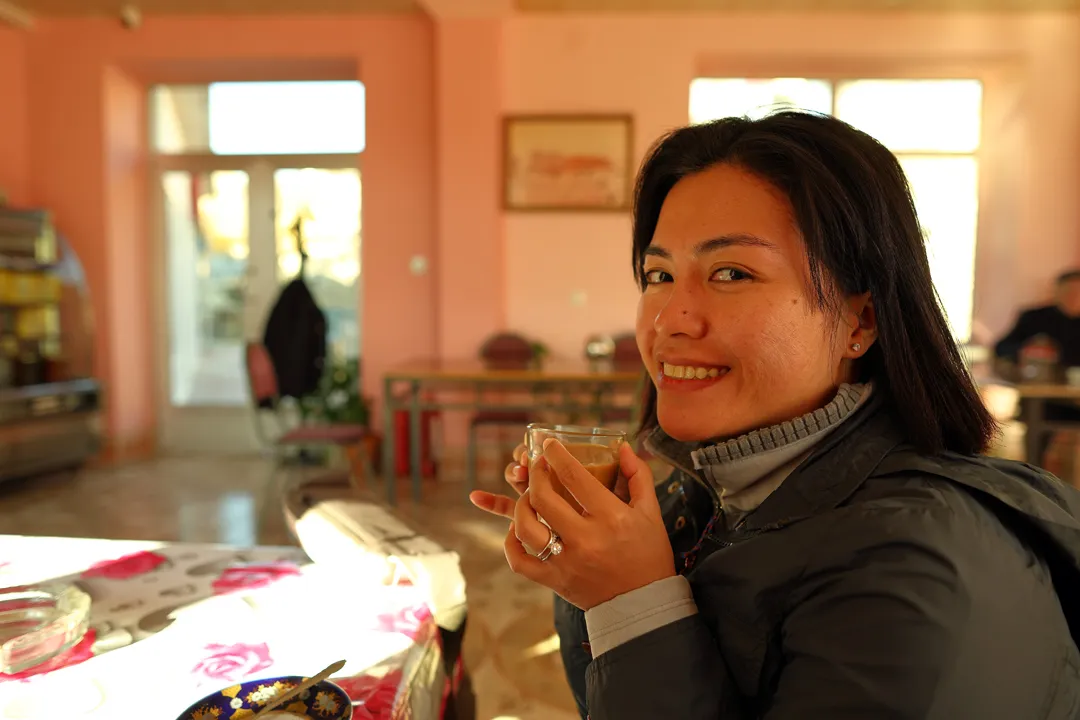
There was not a lot of time left to explore if we still wanted to be back in the hotel before dark, so we did not stay long after finishing the coffee.

In the center of the park, a few steps above the restaurant entrance, there is a monument to the scientist Yusif Mammadaliyev, who was born in Ordubad in 1905, went on to study chemistry in Moscow, and eventually become the president of the Academy of Sciences of the Azerbaijan SSR. It is always interesting to learn about the accomplishments of a person who rose from humble origins to the top.

On the other side of the street is a former madrasa, or Islamic school, dating from 1714 — one of the few remaining buildings of this type in Azerbaijan. It is unfortunately in a ruined state with no windows or roof, having been used as a silk factory during the Soviet era and subsequently abandoned. Hopefully, it is planned to be restored by the government like the other historical structures in Nakhchivan.

One more notable building in Ordubad is the buzkhana, a 14th century ice house. It was used to store ice during the summer months, long before the invention of the refrigerator. Most of its interior is actually underground, where the temperature is naturally lower.
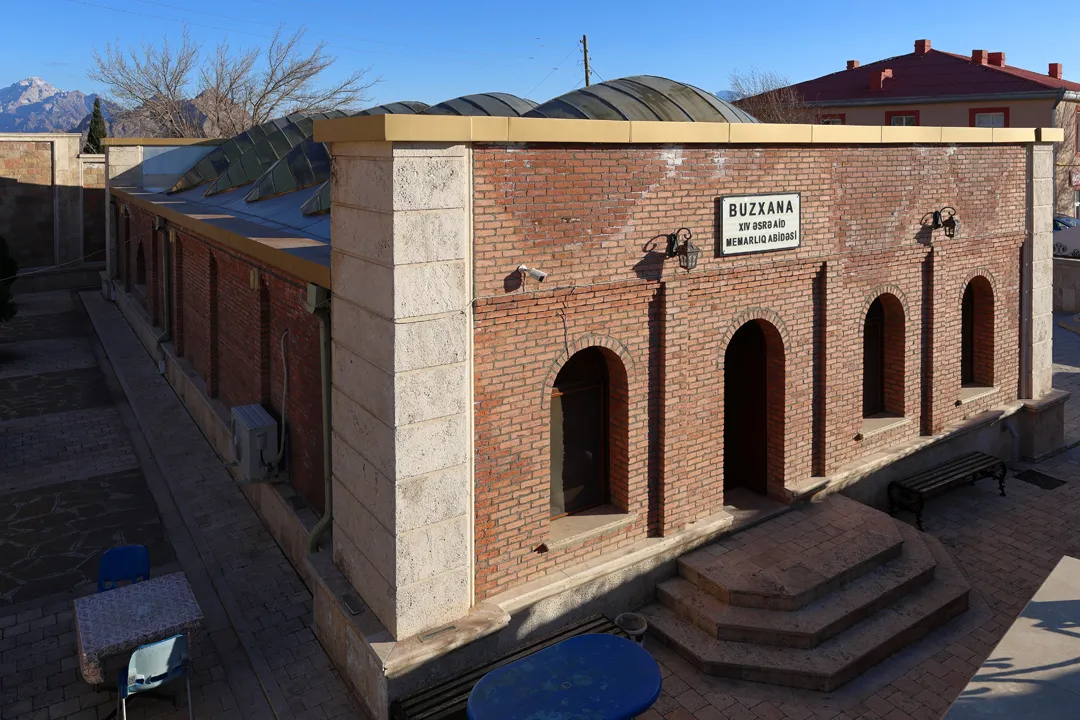
The afternoon shadows were getting longer. We admired the view of the mountains once more, and then it was time to depart.
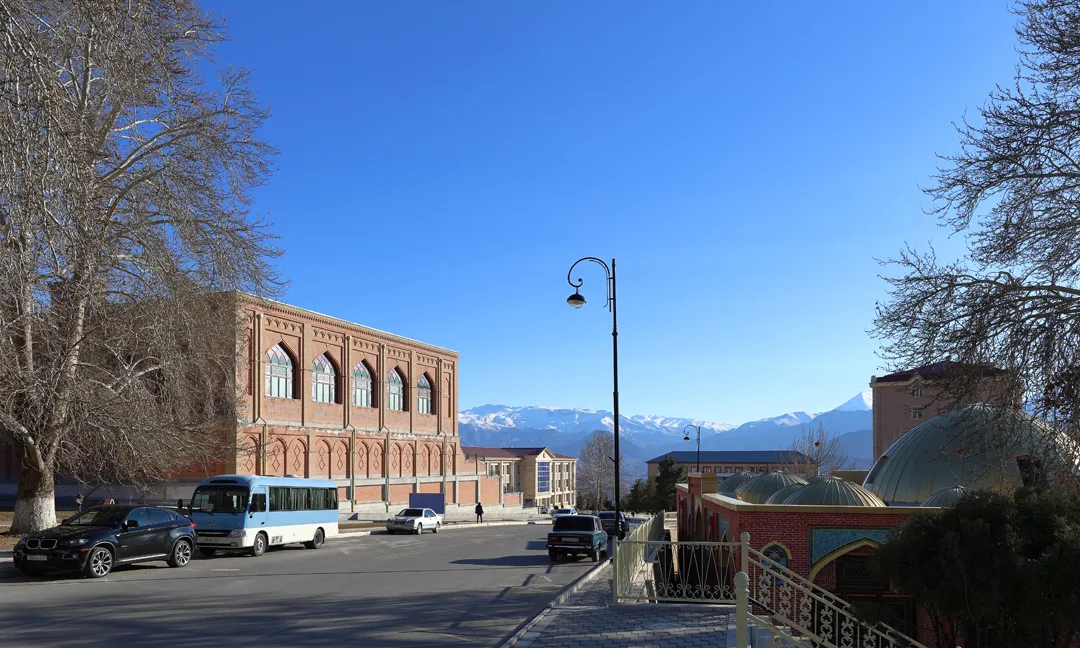
Driving in the opposite direction allowed for a somewhat different perspective of the landscape, although it was much harder to take photos due to the position of the sun.
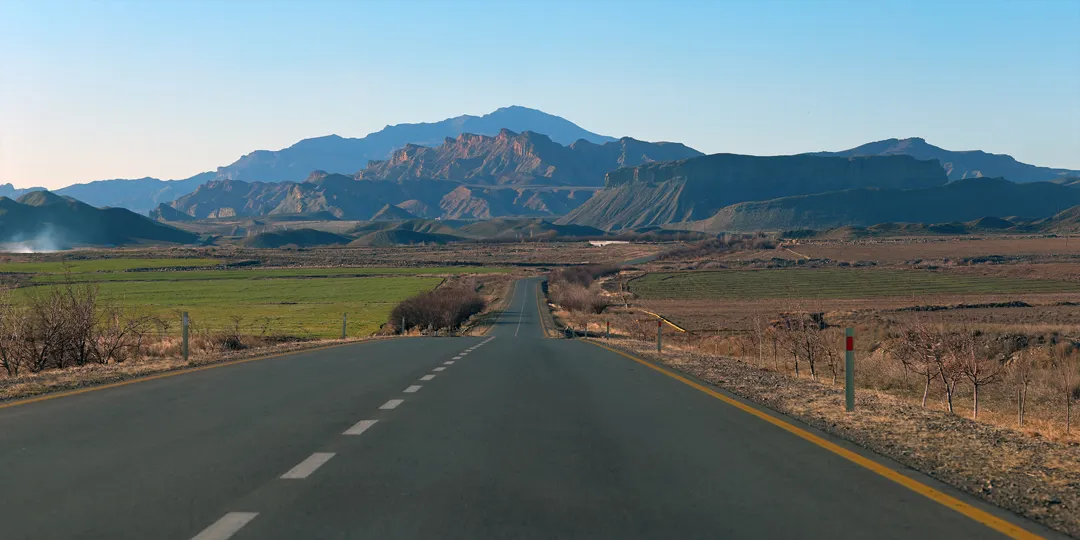
Overall, this was the most tiring day of the entire trip, and we gladly used the ride back as a time to rest.
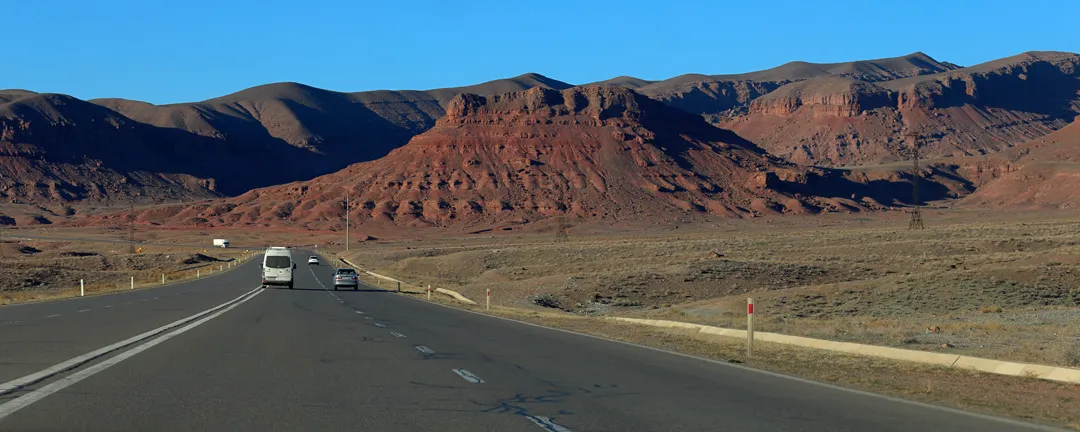
After dropping by the hotel briefly, we returned to Noah’s Mausoleum to catch the sunset. The sky was cloudless, making the visibility even better than the previous day’s, and we could see all the way to Mount Ararat, more than 100 km to the northwest. At 5137 m, Ararat is the highest mountain in Turkey, and it is also considered a national symbol in Armenia (like Mount Fuji is in Japan), since it overlooks the capital Yerevan.
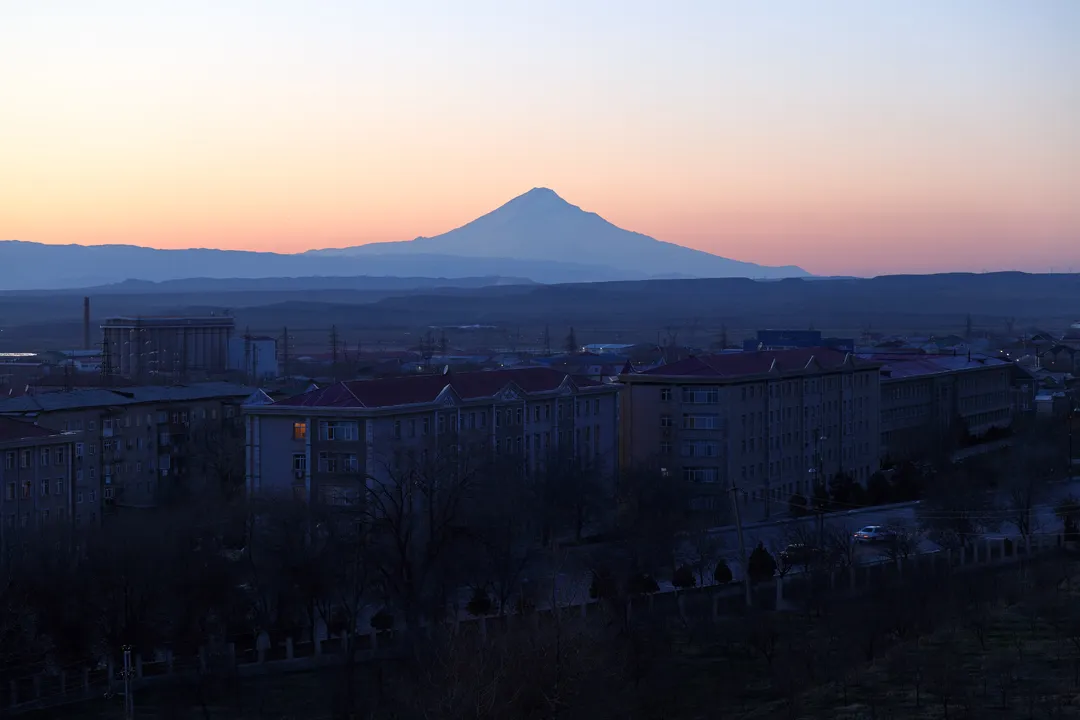
This was a fitting way to end a great day, even if it did get very cold on the walk back.
Karabakhlar Mausoleum, Nakhchivan’s architectural masterpiece
The start of our second and last full day in Nakhchivan saw us on the road again, but heading northwest instead of southeast. We spent 80 manat to hire the same driver for a much shorter itinerary, bringing the total cost of ground transport to 220 manat for 1.5 days. It is hard to say whether this was really a fair price, but it was cheaper than venturing out into the countryside in Mongolia, another place with few options for transportation.
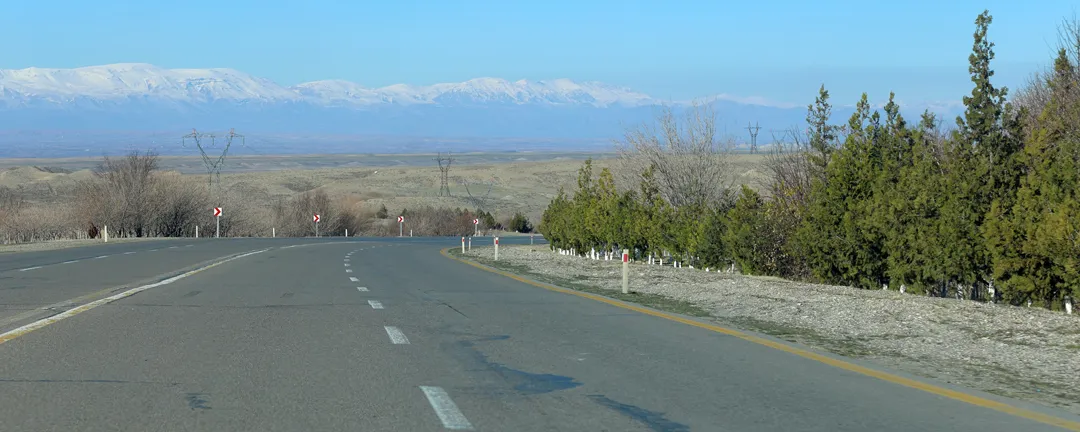
It was another exceedingly clear day, and the snow-covered Mount Ararat could easily be seen in the front view.
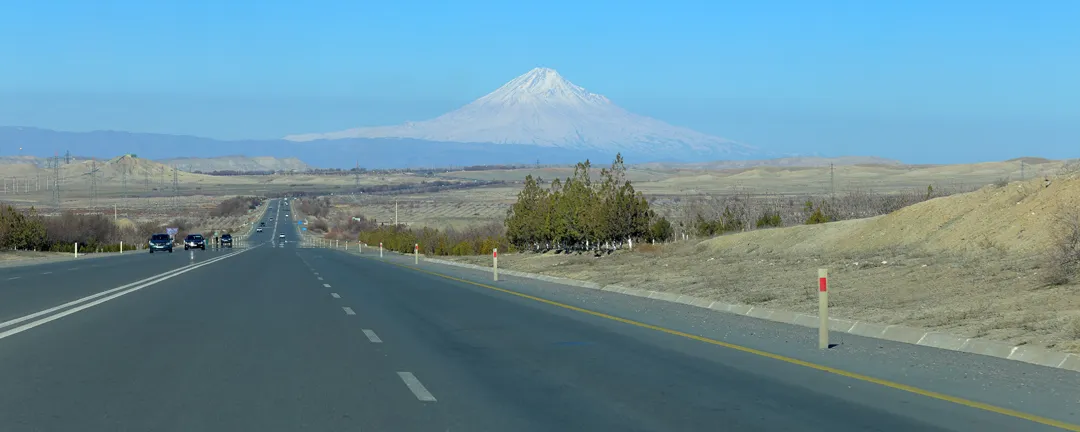
Within 45 minutes, we arrived at the small village of Karabakhlar, 42 km from Nakhchivan city. It is a quiet and unassuming place, but contains the greatest example of Azerbaijani architecture in Nakhchivan.
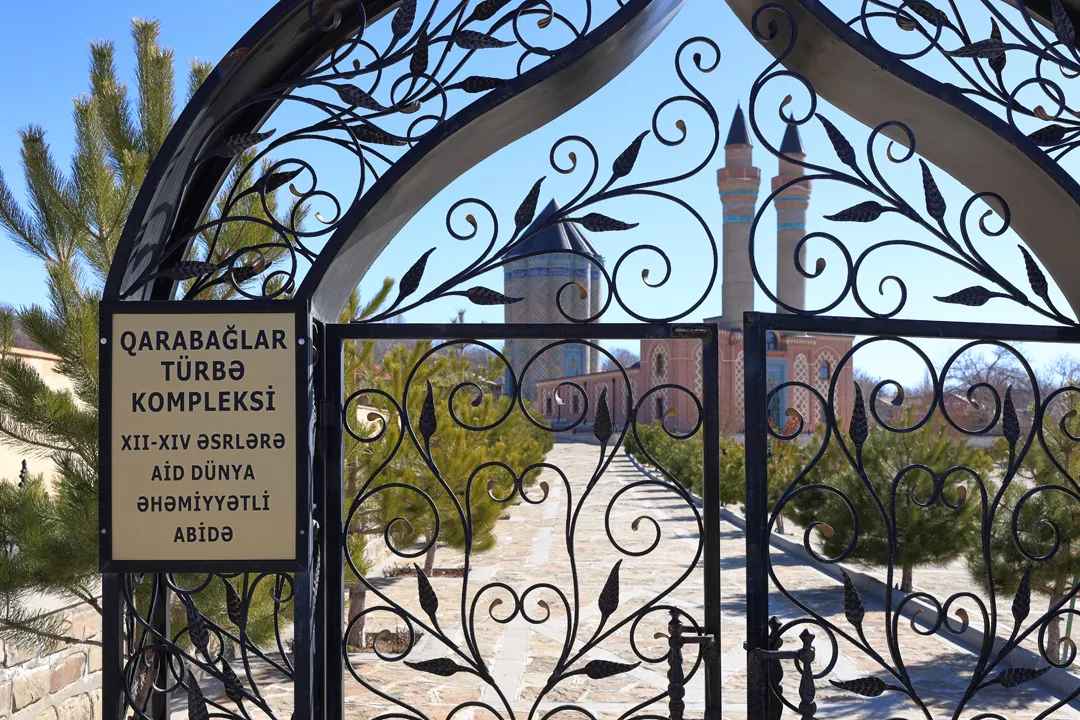
The Karabakhlar Mausoleum is believed to have been built around the end of the 12th century to serve as the tomb of the Mongol noblewoman Qutui Khatun (the region was part of the Mongol Empire at the time), and with a height of 30 m, it towers over the village’s dusty houses. Its designer, Ajami Nakhchivani, is still remembered in Azerbaijan today; the Baku Metro station Memar Ajami (memar is the Azerbaijani word for architect), where the green line intersects with the purple line, is named after him.
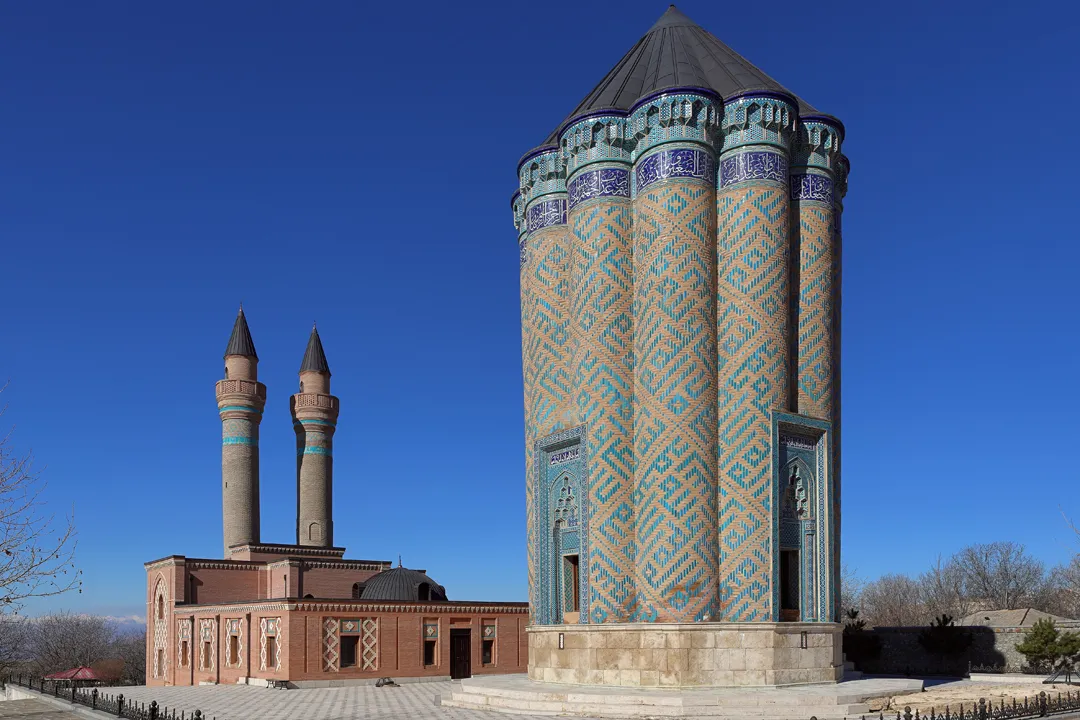
Unlike the other mausoleums in Nakhchivan, which have polygonal layouts with straight sides, the Karabakhlar Mausoleum has a complex shape made up of twelve intersecting circular arcs, decorated with an elaborate repeating pattern. It also has another building with two secondary towers in addition to the main tower.
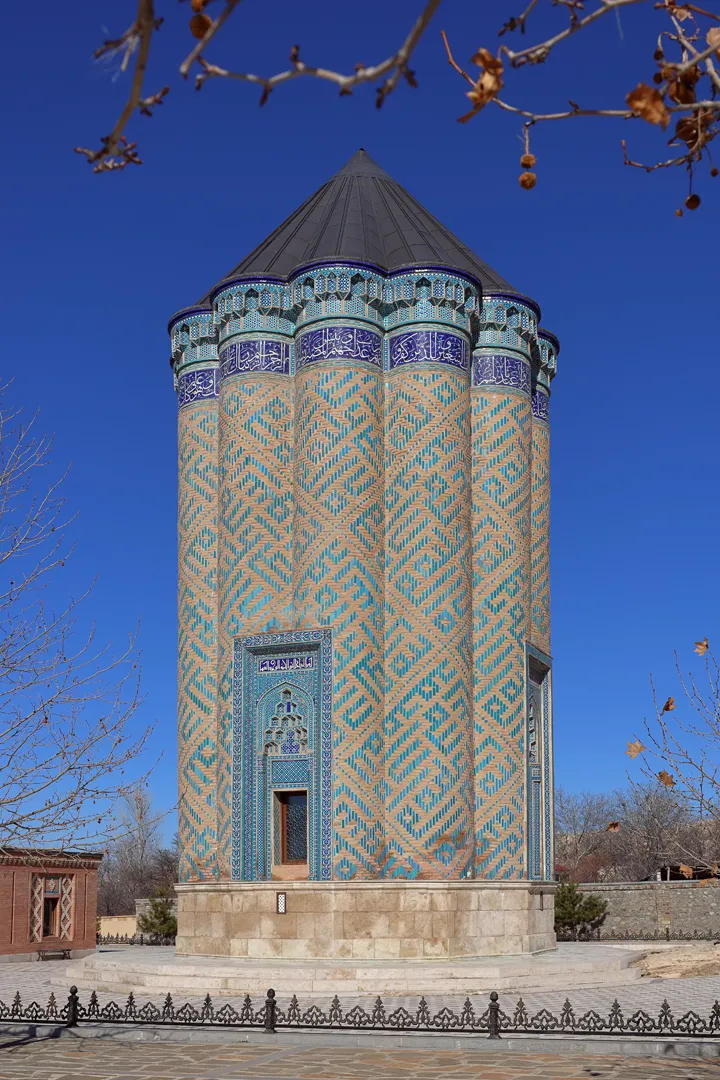
Interestingly, the inscriptions found around the top and above the windows are in Arabic, a language which is not spoken in modern Azerbaijan. The English-speaking employee there told us that the text comes from the Quran.
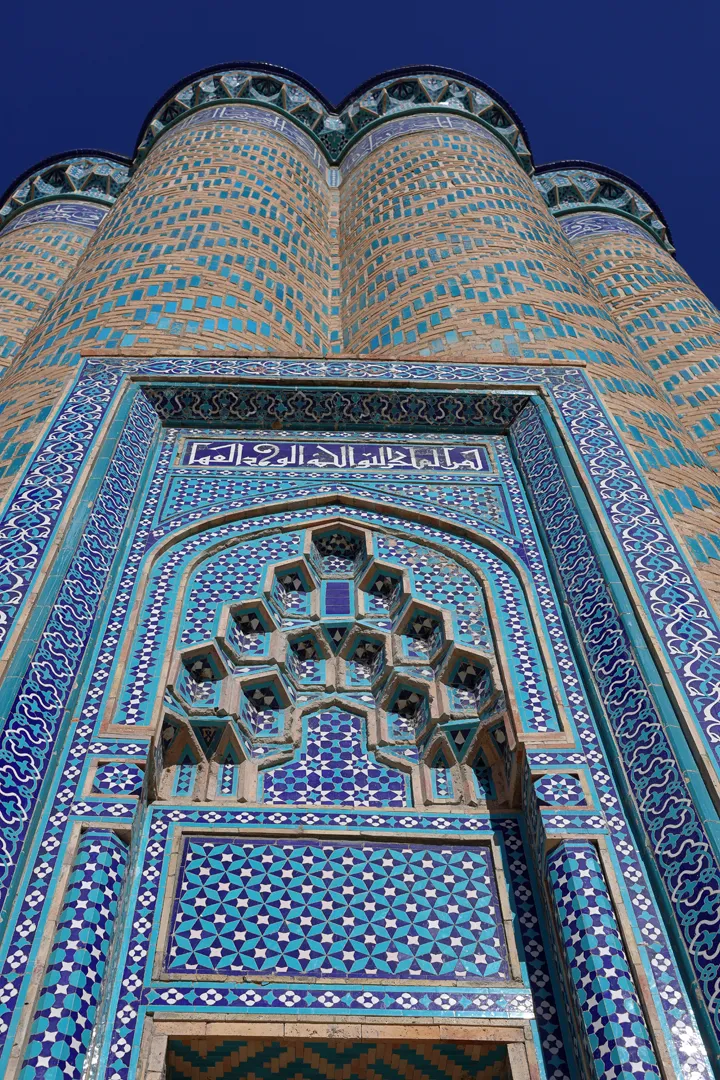
Other than the mausoleum, there is nothing else to see in Karabakhlar, but when we were turning back onto the main highway as we were leaving, we saw a park with a large flagpole at the center and stopped there briefly. Mount Ararat can be seen even more clearly there, dominating the landscape.

Momine Khatun Mausoleum and the Khan’s Palace
We asked to be dropped off in the city center of Nakhchivan, in front of the Momine Khatun Mausoleum. Also designed by Ajami Nakhchivani and constructed in 1186 as a memorial for the wife of a local ruler (khatun is the feminine form of the Mongolian title khan), it is slightly larger than the Karabakhlar Mausoleum, albeit not as elaborate.
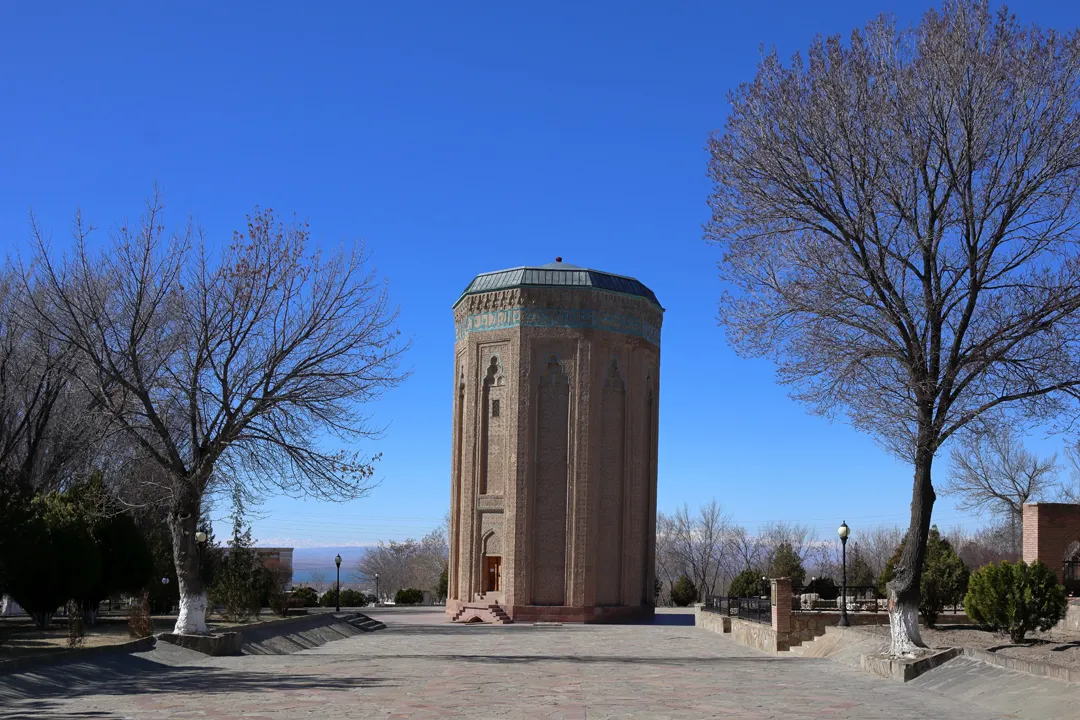
Nonetheless, it is the most well-known symbol of the Nakhchivan Autonomous Republic. Even when we were in Baku, we saw a picture of it on the bottled water provided in the InterContinental hotel, since the two major bottled water brands both are both from Nakhchivan.
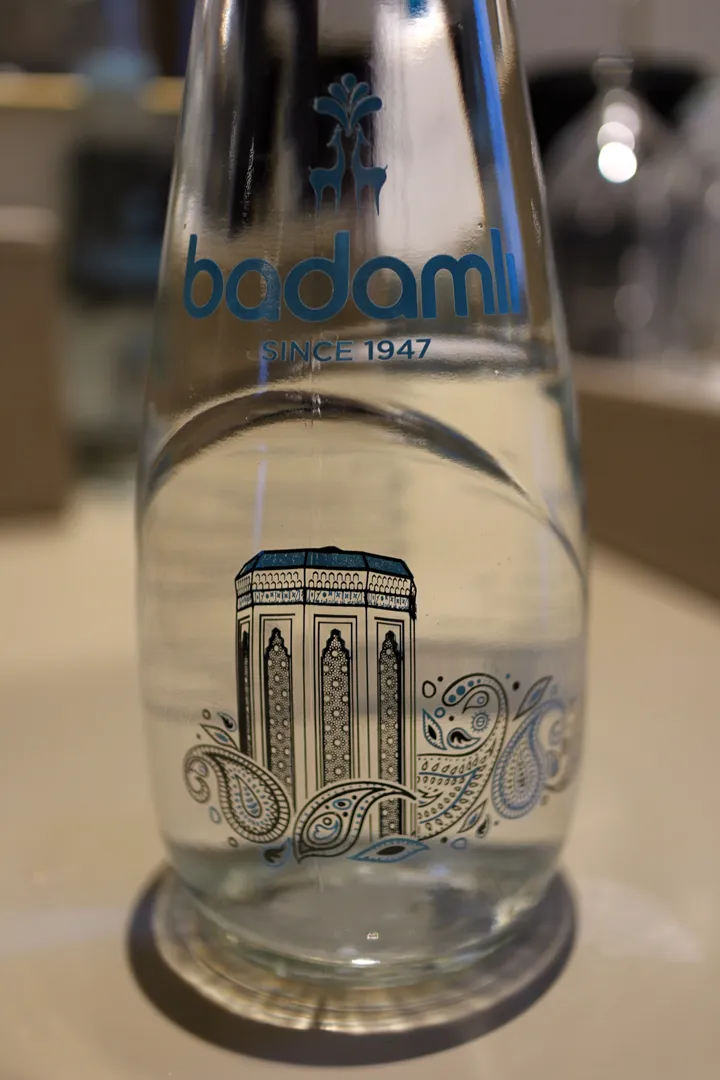
The decorative geometric patterns on the mausoleum’s exterior are more complicated than they appear from a distance. Note that the blue stars have seven points, so it is a nontrivial task to create a tessellation pattern that incorporates them.
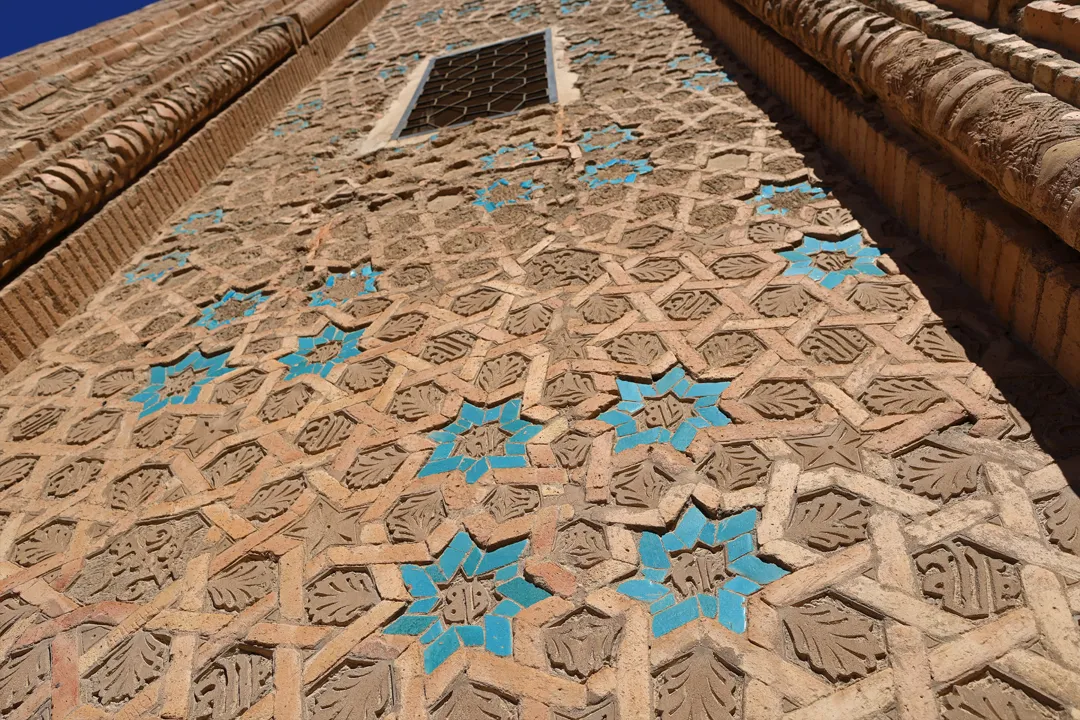
Inside the tower, the hollow space is used to display artworks.

Not far from the Momine Khatun Mausoleum is the Nakhchivan Khan’s Palace, which was the residence for the local rulers in the 18th and 19th centuries, a time when Nakhchivan was governed with relative independence. Since 2010, it has been open to the public as a museum.
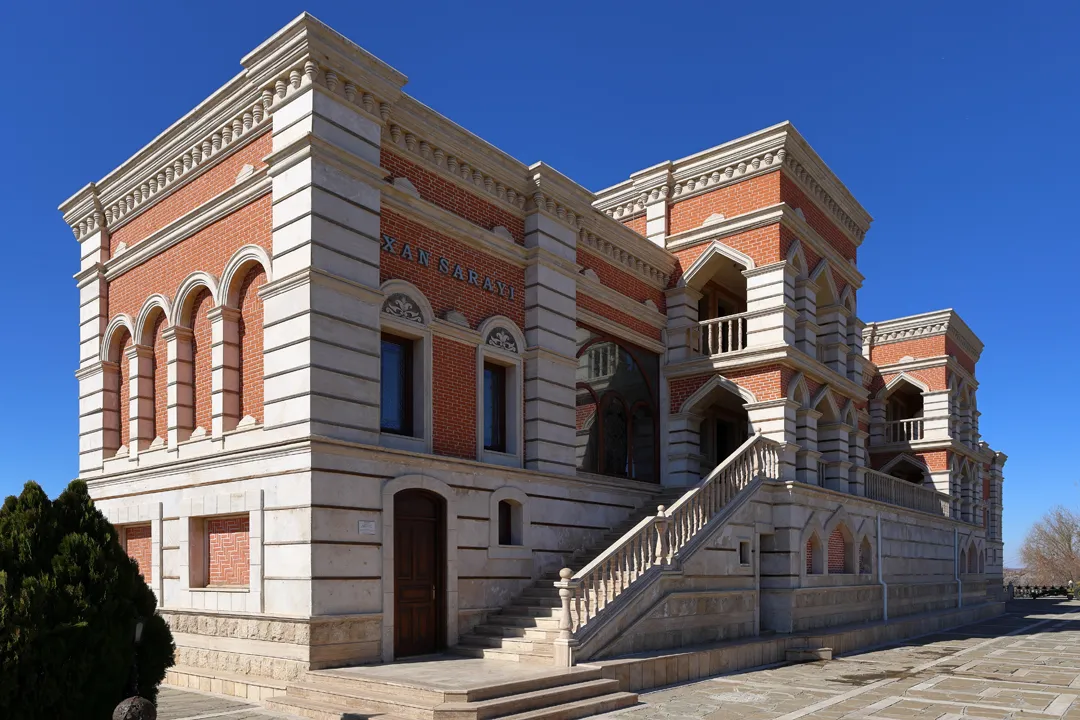
Strangely, every window in the palace is stained glass, making it impossible to see outside from within.
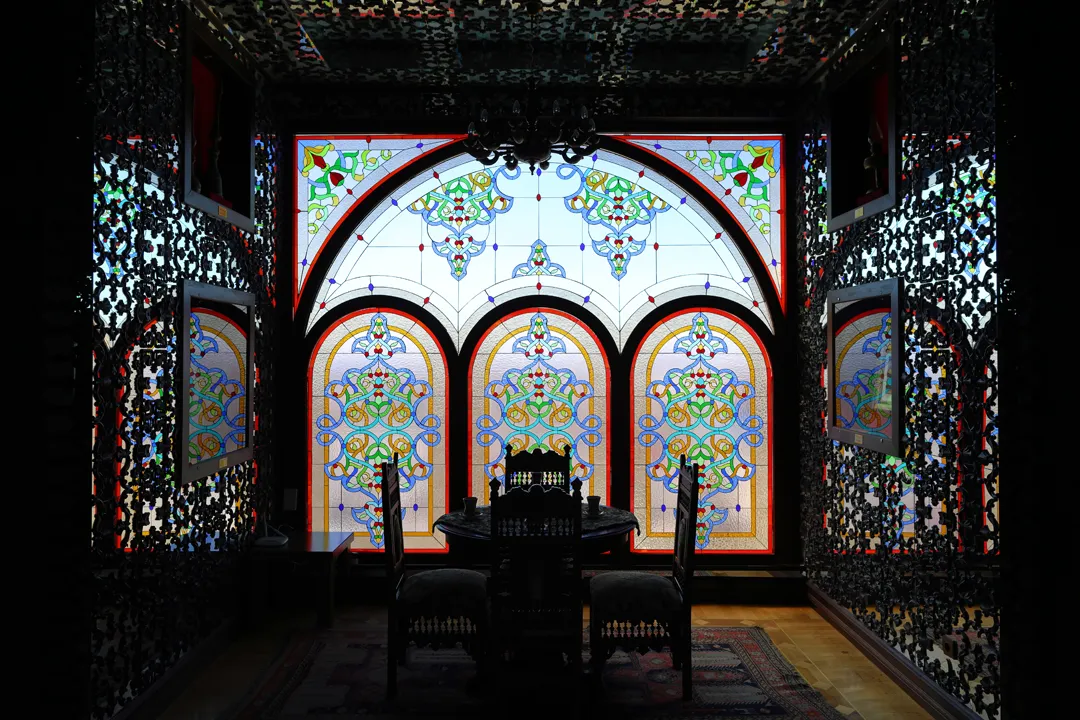
Despite this, by positioning my camera carefully, I was able to make an interesting composition.
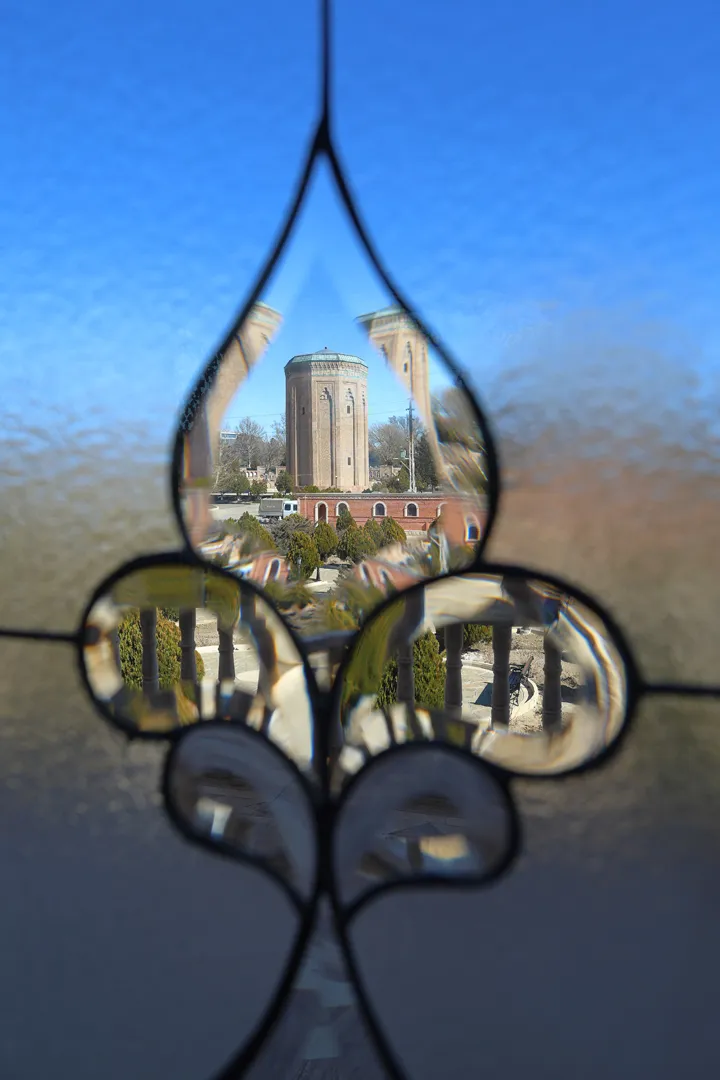
Outside the palace, there is the only souvenir shop that we found anywhere in Nakhchivan — not even the airport has one. To be honest, there are few unique souvenirs available in a place with almost no tourists, but that is to be expected.
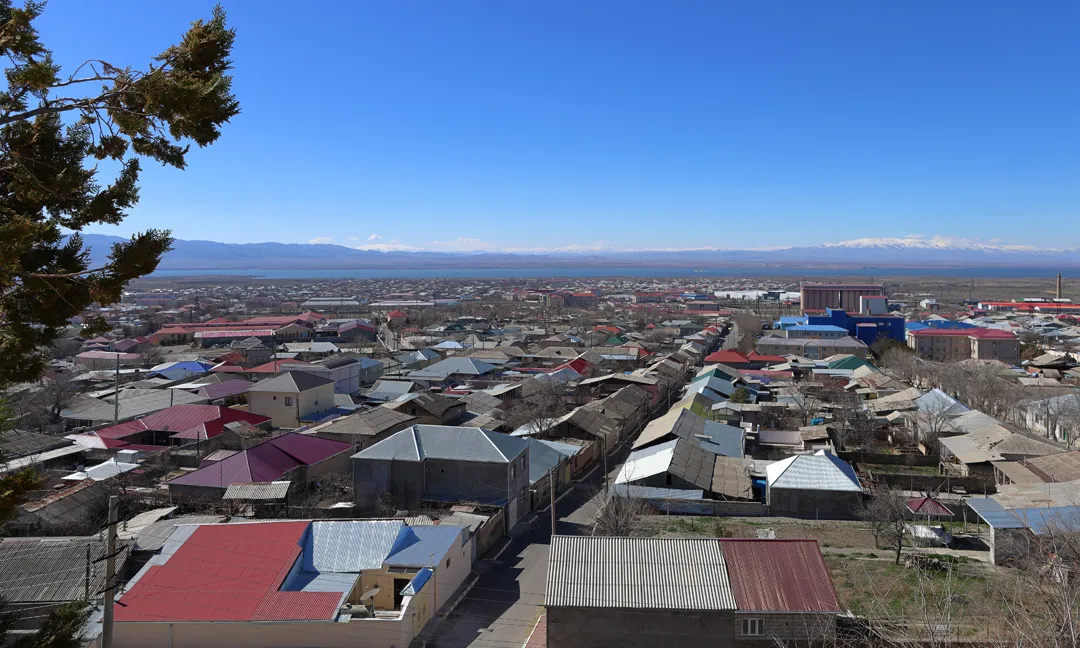
Exploring Nakhchivan city
It was time to eat lunch after leaving the palace. We walked north along the main street, toward the busiest part of the city.
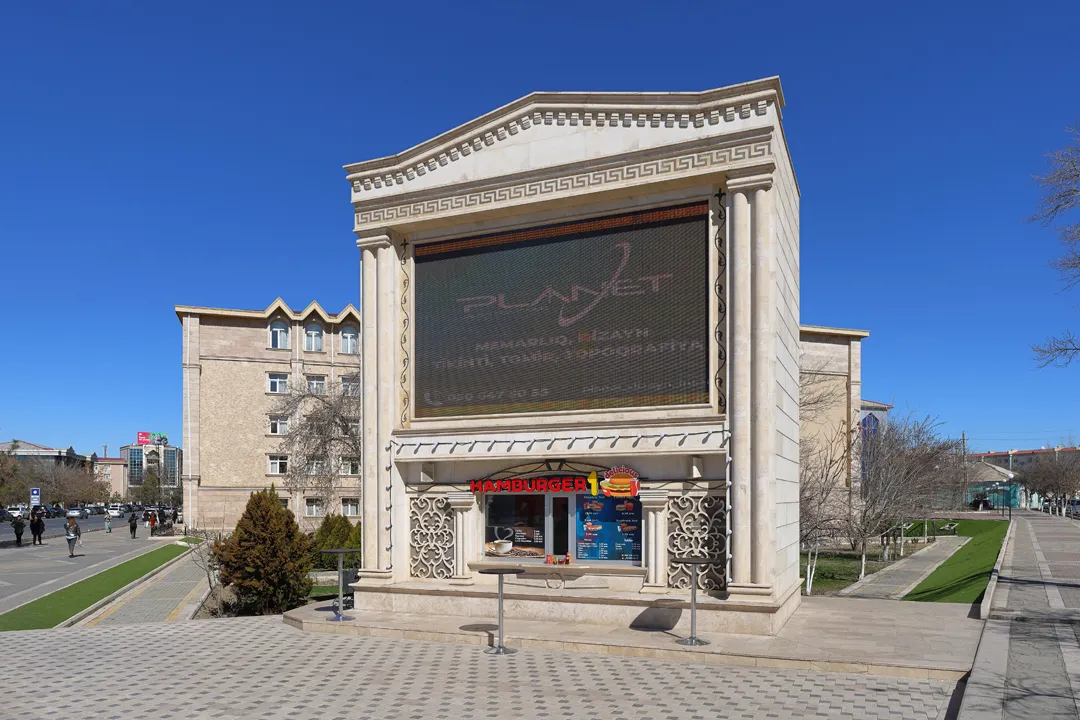
Nakhchivan city has a population of 95,000, or 20% of the total population of the Nakhchivan Autonomous Republic, making it the sixth largest city in Azerbaijan. There are many pedestrians on the streets, even in the winter, so it has the proper atmosphere of a city.
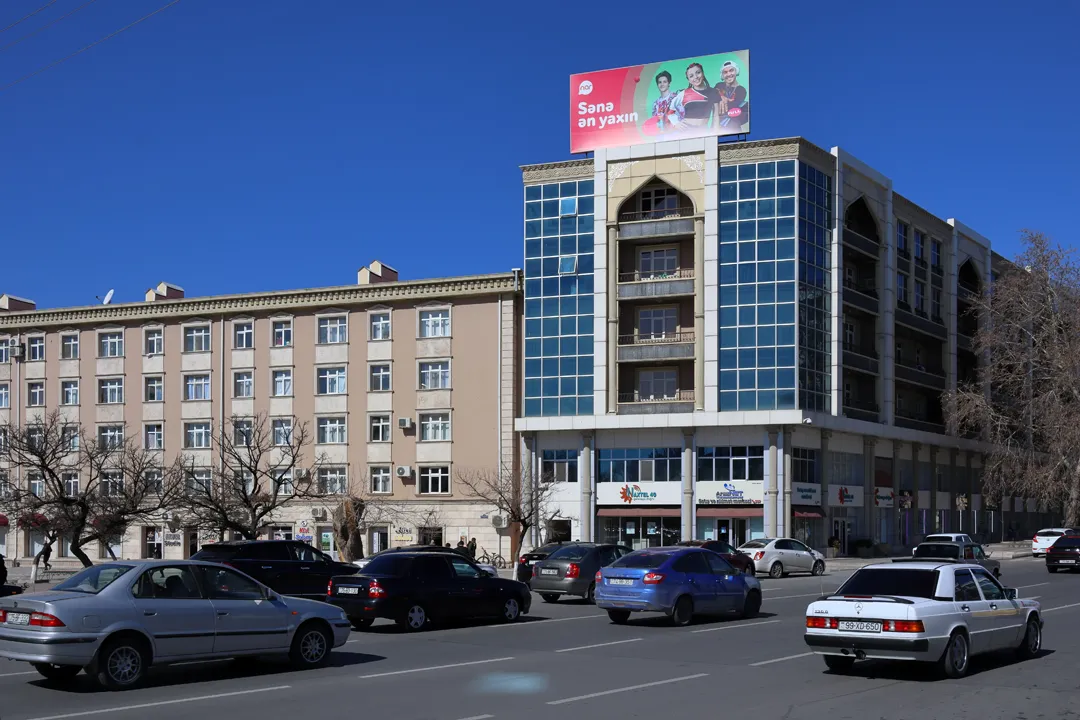
We passed a building with a sign proclaiming it to be a tourist information center, but the door was locked — another sign that tourism in Nakhchivan is practically nonexistent. However, a far more obvious indication of this was that many people openly stared at us in the city, or even waved at us, which has never happened in Baku or anywhere else in our travels.

Across from the tourist information center, we found the main square of the city, which contains a few curious things. There is a statue of the eponymous character of the medieval Turkic epic Book of Dede Korkut.
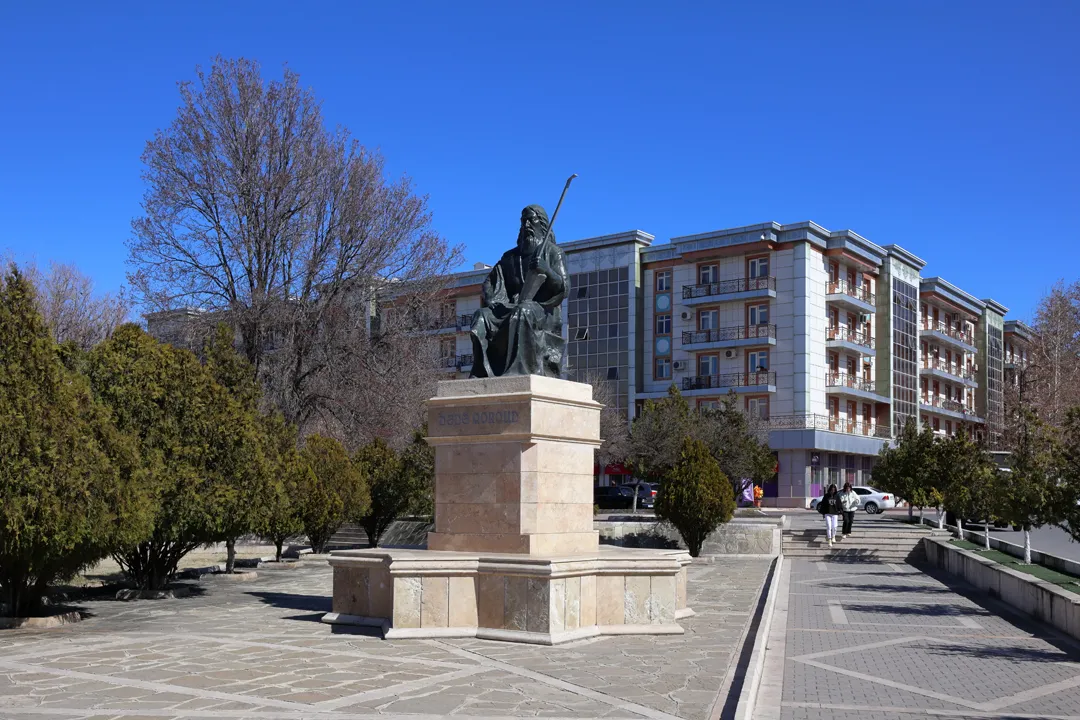
Also, there is a well-preserved traditional bathhouse, but it is no longer a functional bathhouse and seems to have been converted into some kind of café.
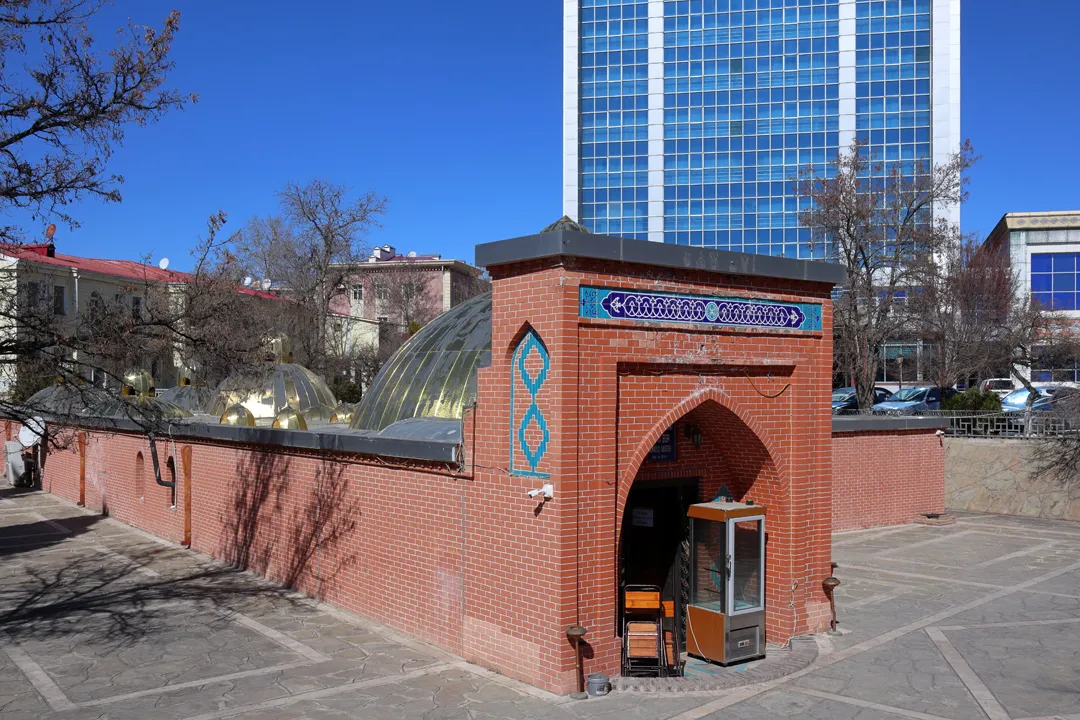
There are several restaurants in the vicinity of the square, so we chose one with a lot of customers coming and going. They had one English-speaking employee, and the food was extremely tasty.
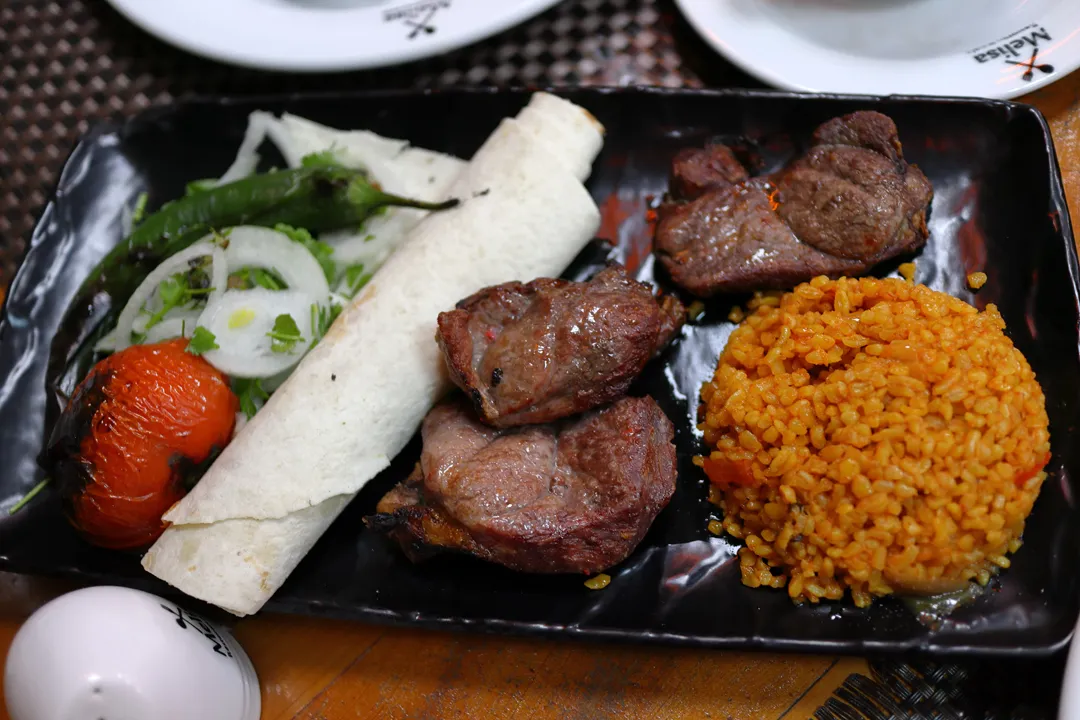
After lunch, we explored the city further. On a side street just south of the square, there is a small mausoleum, which was open but had nothing inside. It was not clear to us what it is called.

On a street corner, we saw a food stand with a hexagonal shape that evokes the form of the mausoleums.
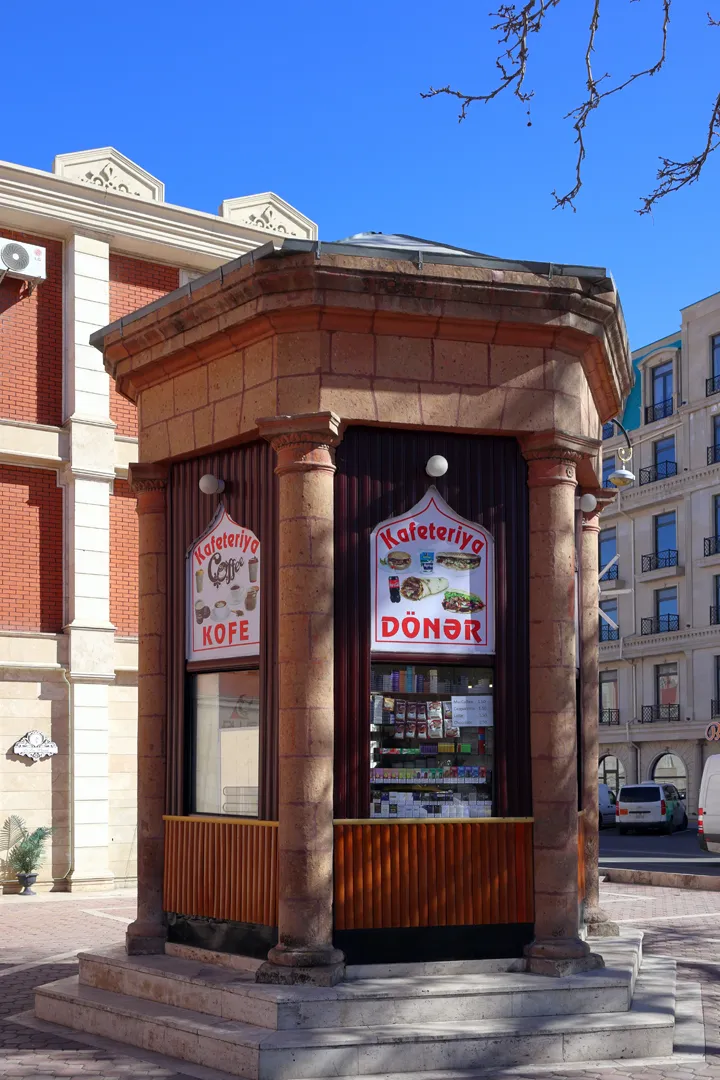
As mentioned previously, Nakhchivan was the birthplace of Heydar Aliyev, so it is not surprising that there is a statue of him, located on Heydar Aliyev Avenue.
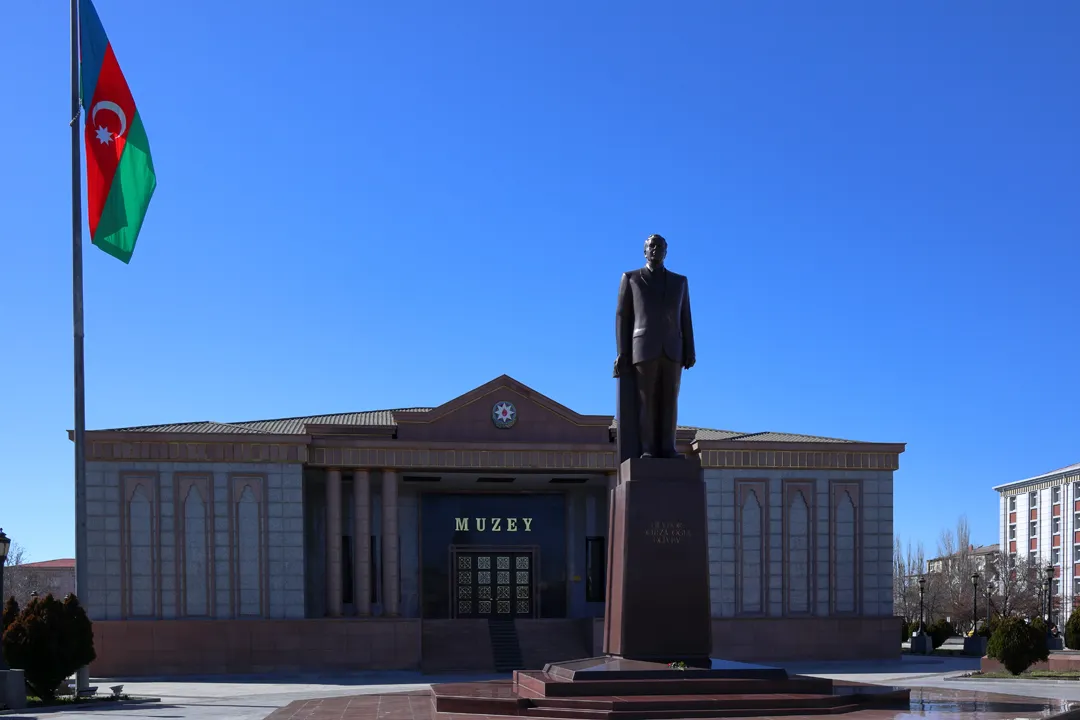
Perhaps because of this, Nakhchivan is better developed than the main part of Azerbaijan (excluding Baku), which can be seen just by walking around. In general, the architecture of modern buildings in Nakhchivan varies greatly, unlike in Baku where most buildings in the city center use similar materials and colors.

There are still some buildings that would not look out of place on the Baku Boulevard, but they are a minority.

In addition to the food stand, a few other buildings appear to have been inspired by local landmarks, such as the Ordubad Juma Mosque.
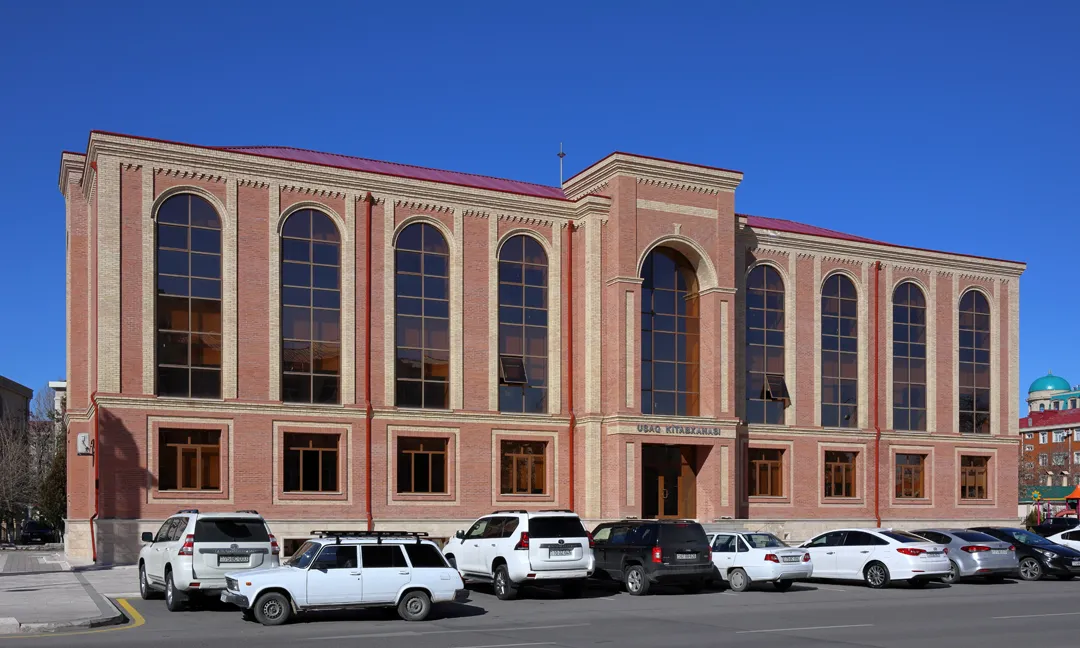
Lastly, there are somewhat European-styled buildings, reminiscent of Japanese architecture from the Meiji period, for example, the Tokyo Station Marunouchi Building, which was also influenced by European trends of the time.
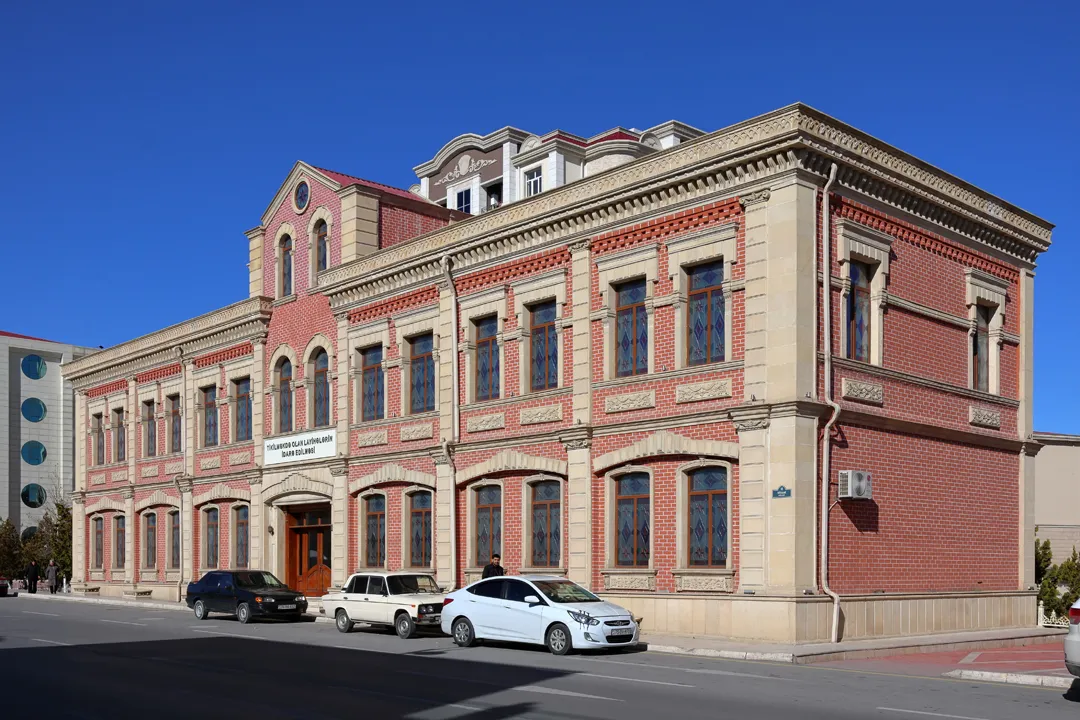
Eventally, we arrived at Nakhchivan’s central market by pure chance when wandering around, although actually, it is only two blocks west of the main square. The market consists of an outdoor part for food and an indoor part for goods.
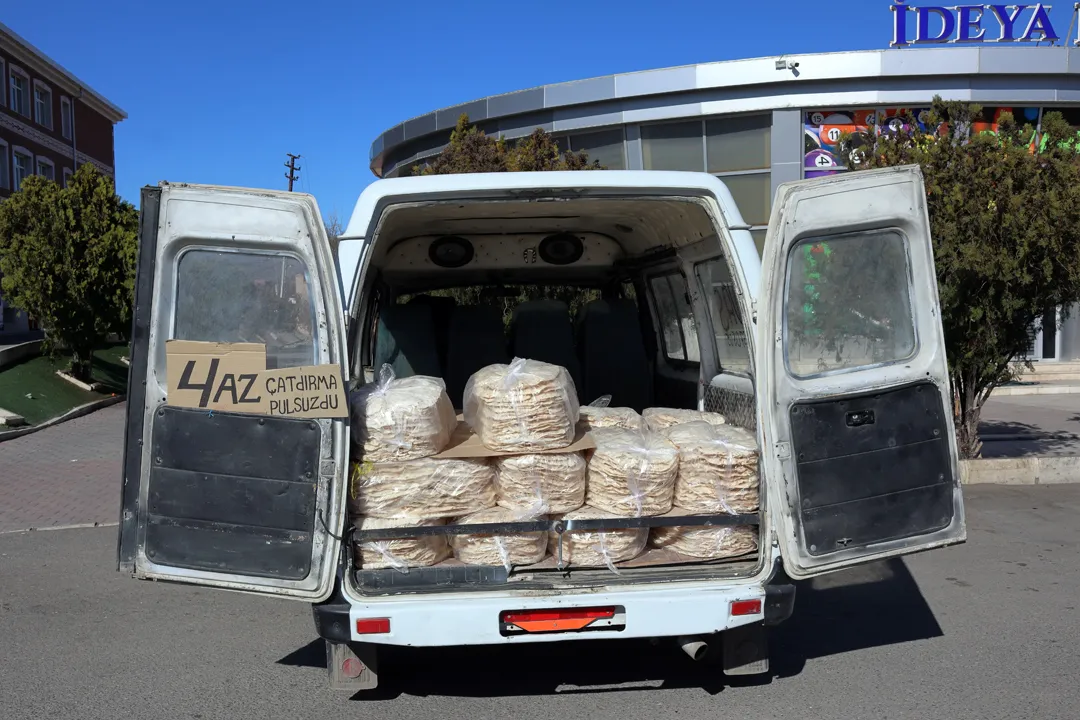
Only around half of the vendors were open, but there was a decent amount of activity. We first bought some fruits outside.
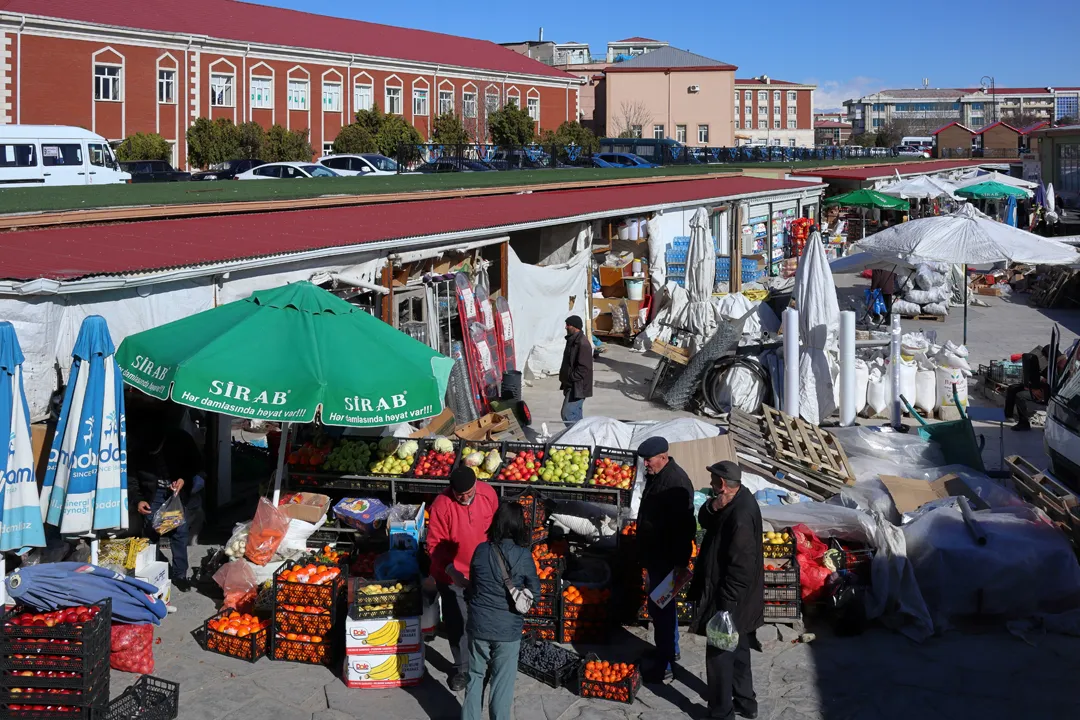
Then, we went inside the main building to look for a hair tie. A vendor tried to give us one for free, but we insisted on paying the 1 manat.
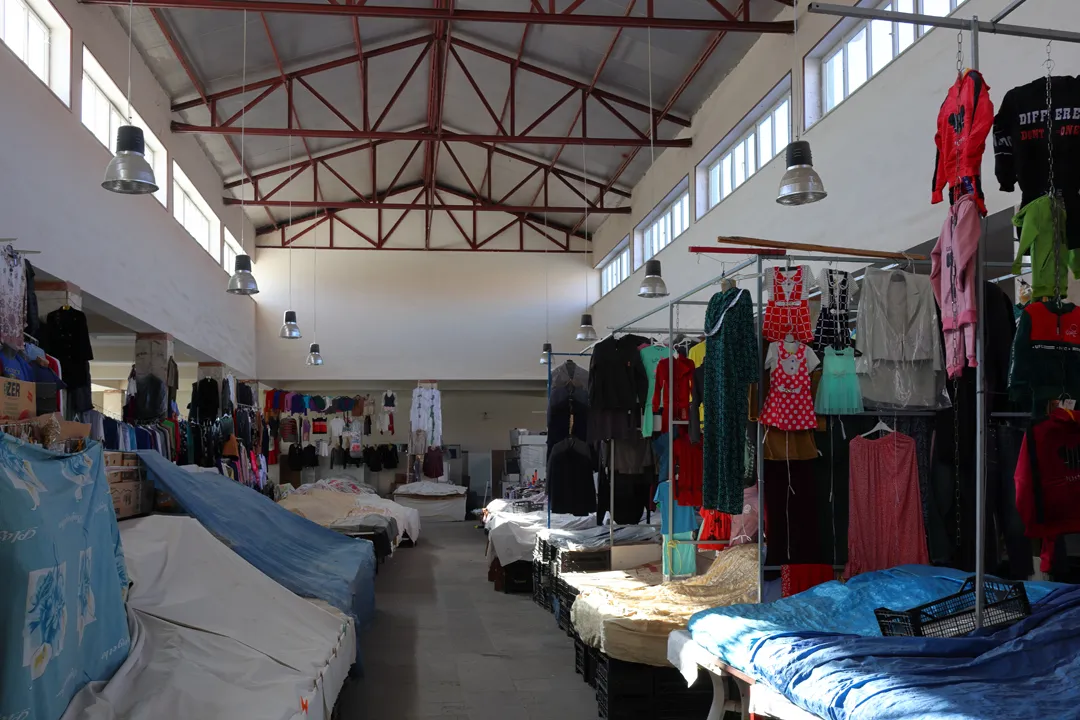
We exited the market from the east side and started walking back towards the hotel, passing the Juma Mosque. During the Soviet era, this was the only operational mosque in Nakhchivan.
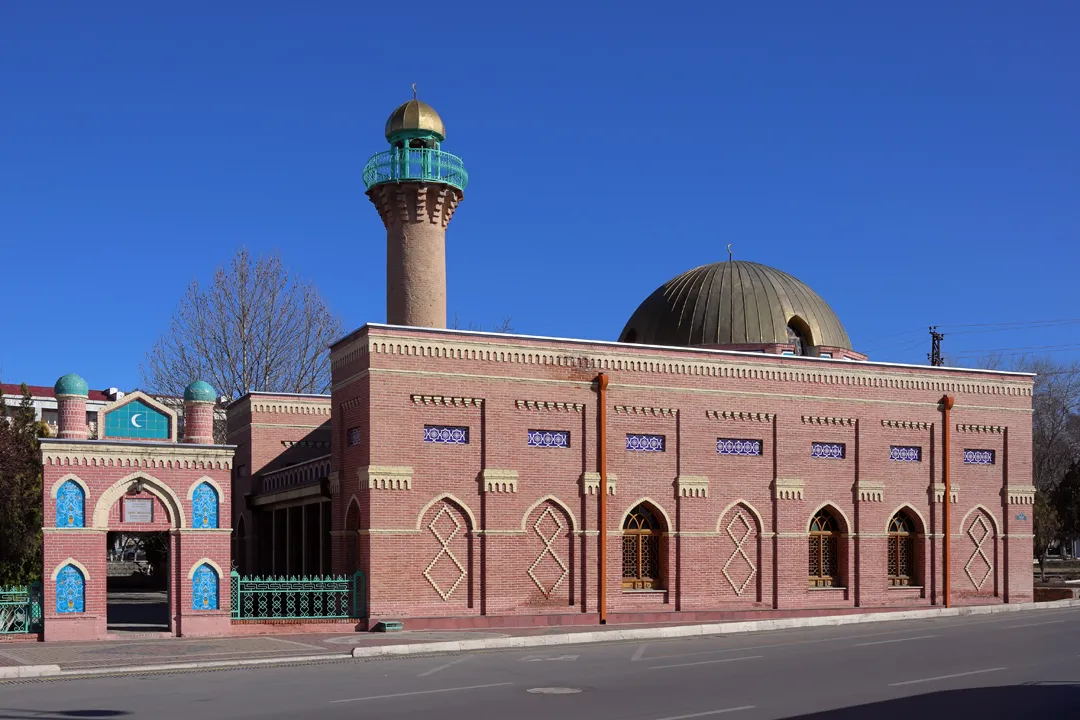
Back on the main street, there is a cool retrofuturistic monument in front of the park containing the Momine Khatun Mausoleum. It was built very recently, in 2022, to commemorate Azerbaijan’s victory in the Second Nagorno-Karabakh War, yet it looks like something from the Space Age.
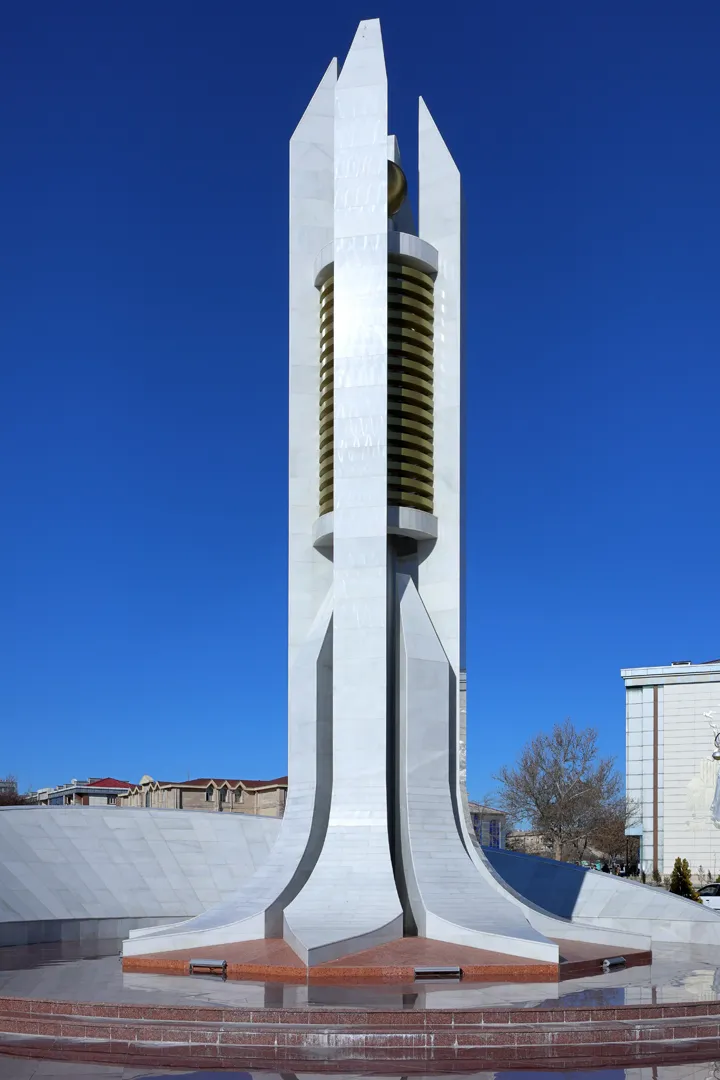
Just before reaching the hotel, we took one last short detour to the Yusif ibn Kuseyir Mausoleum. Completed in 1162, it is the earliest known work by Ajami Nakhchivani and has the same easily recognizable characteristics as the other mausoleums: polygonal shape, repeating geometric patterns, and Arabic inscriptions.
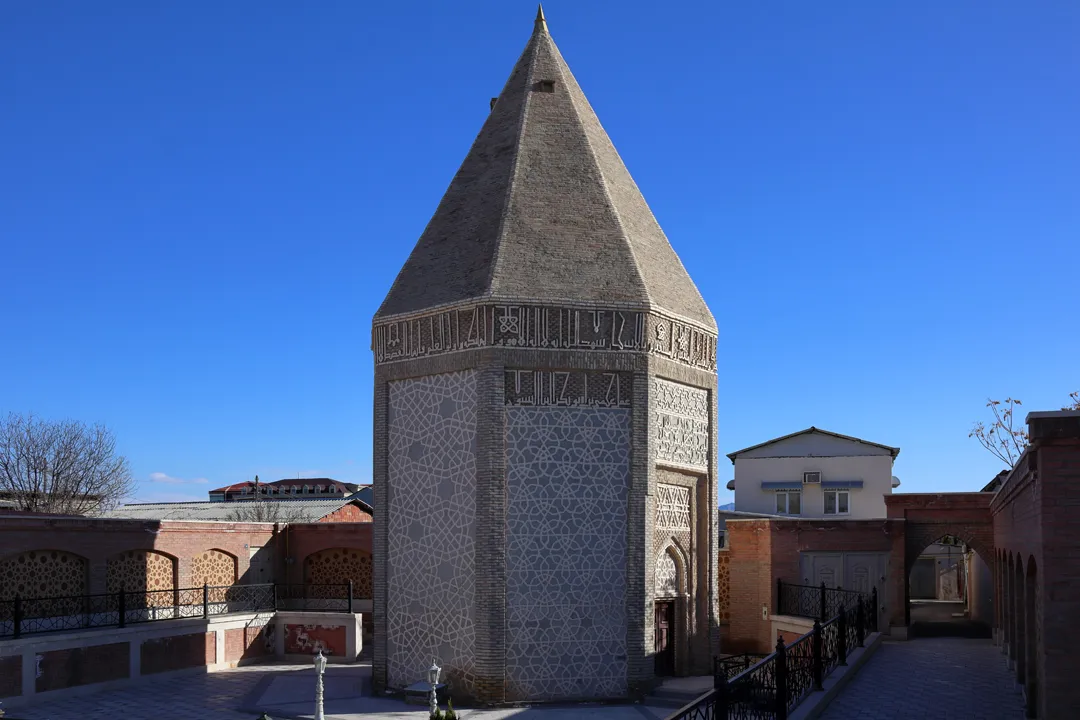
The mausoleum is situated among houses in a residential neighborhood, but it is tall enough that the spire can be seen from a distance. The door was locked, so we could not go in, though it apparently is open to the public sometimes.
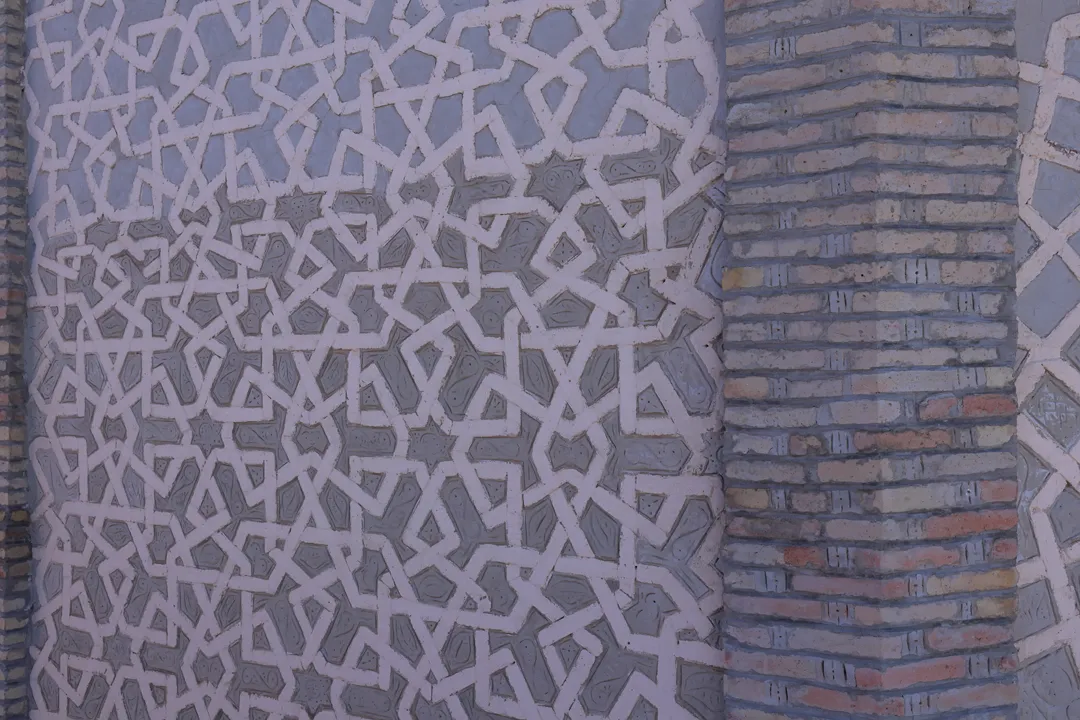
Not far away, at the corner of the main street, is a clean and modern high school. Incidentally, we observed all public buildings in Nakhchivan city to be in excellent condition, much better than would normally be expected for such a place.
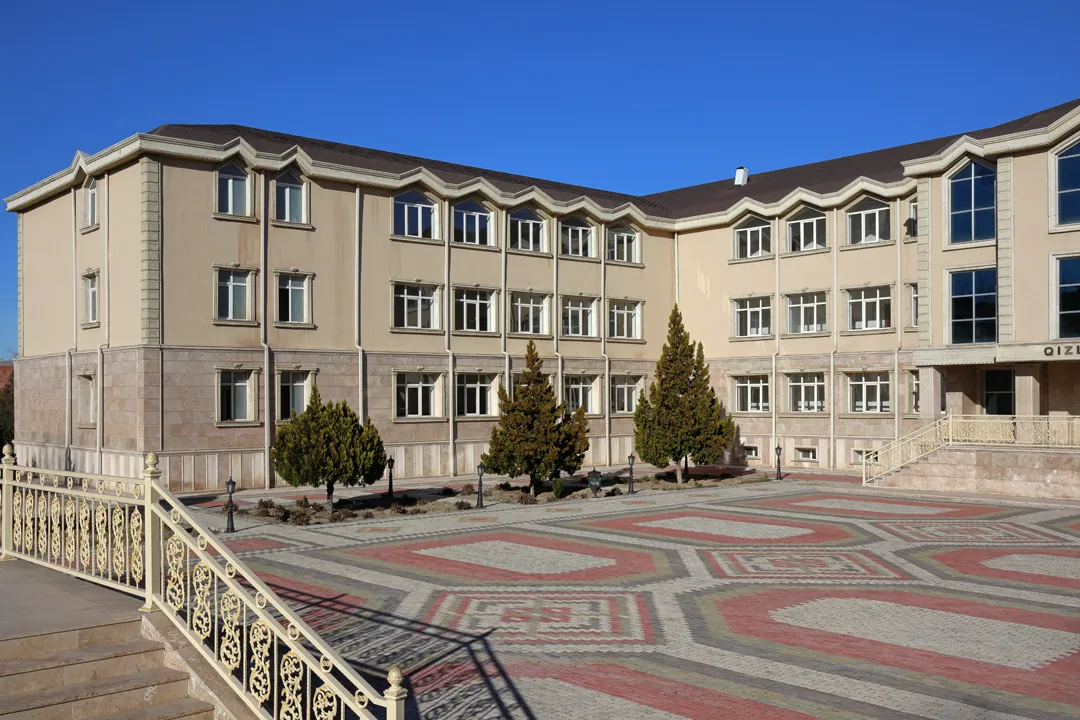
Back at the hotel, we went to the café again. This time, there was a strange blue cheesecake, which we of course tried. It turned out to be just as good as the plain one.
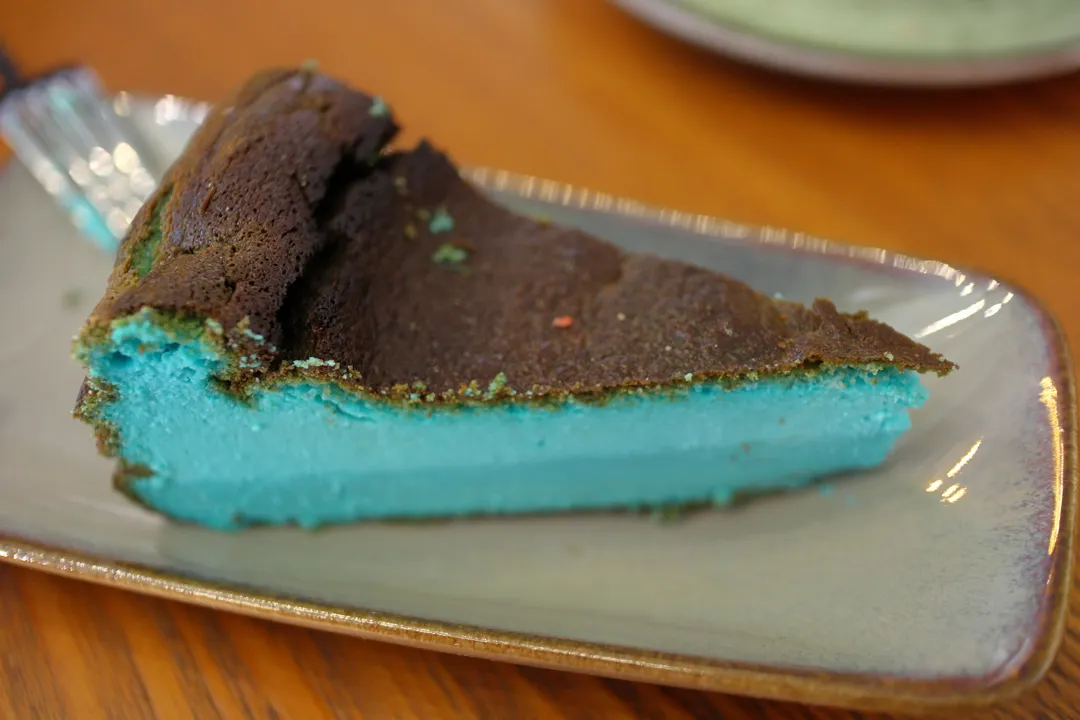
Later for dinner, we ate in the Georgian restaurant, which was fine, albeit not particularly exciting because the hotel’s breakfast is served in the same space.
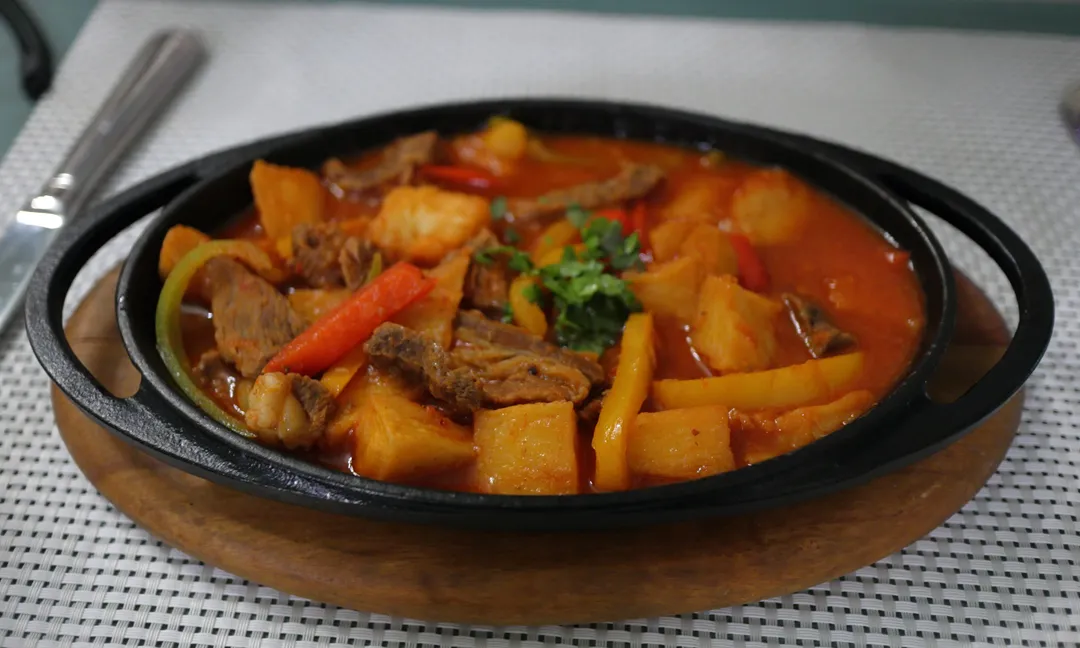
The next day was our last in Nakhchivan. Our flight back to Baku was at 14:00, leaving the morning free. Since we had no concrete plans, we just went to the city center again. We tried the café converted from the old Soviet cinema, prominently located in the central median of the main street. Unfortunately, the coffee there was not as good as the hotel café’s.
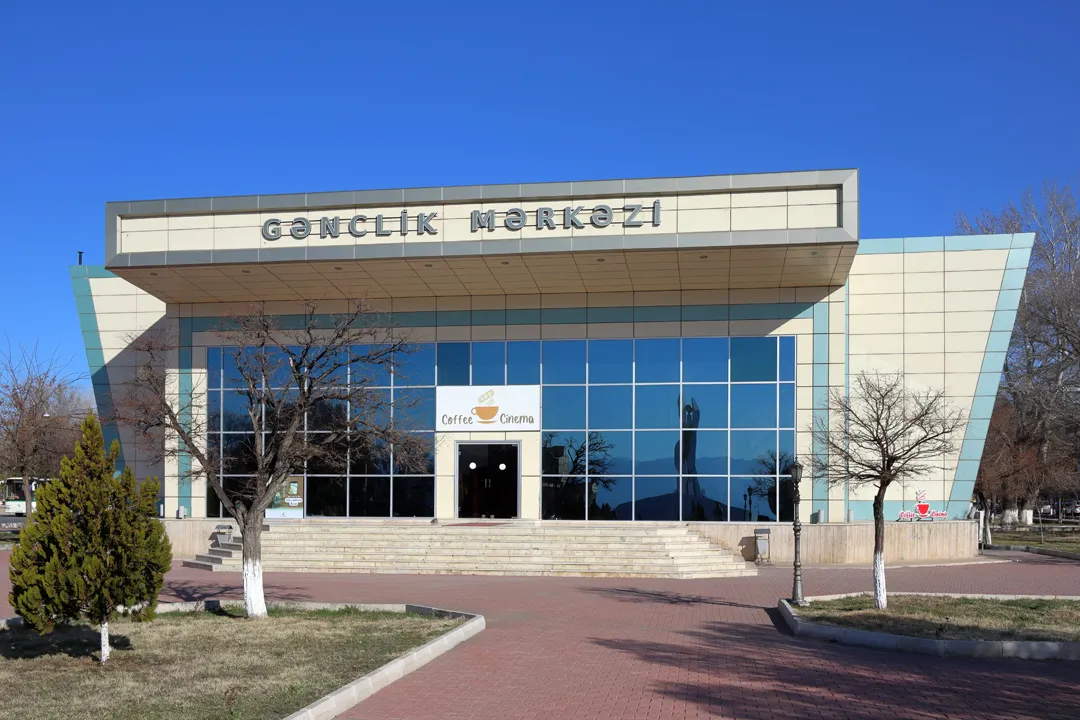
We decided not to walk a lot more, so we simply went to the adjacent park. While it has the Momine Khatun Mausoleum as a centerpiece, it is otherwise a normal city park with trees and benches.
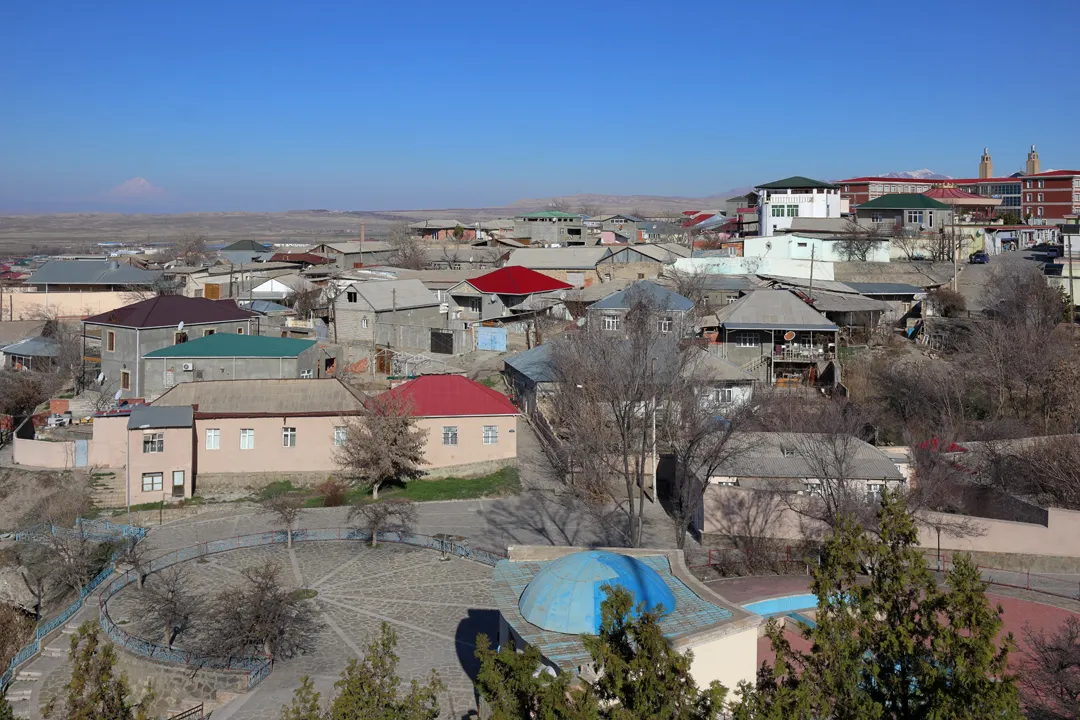
Soon, it was time to leave. The taxi from the hotel to the airport cost only 4 manat, which made us realize that we had been overcharged upon arrival (10 manat). Even so, nearly everything had gone smoothly for us in Nakhchivan, and we really were fortunate to have visited a place that so few outsiders have seen.

